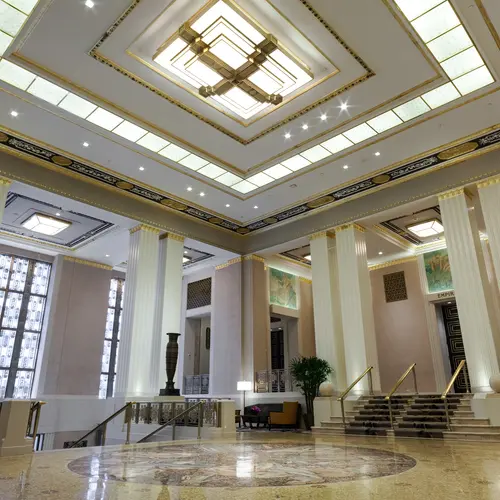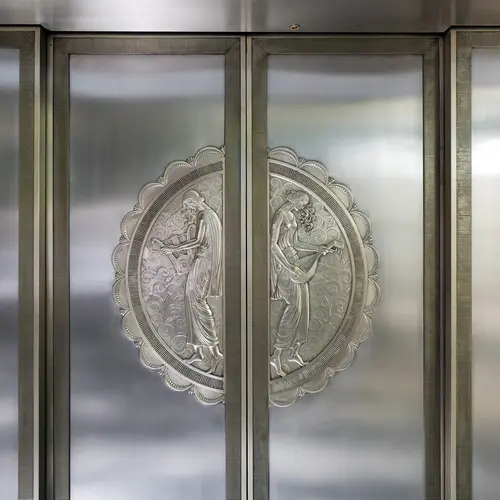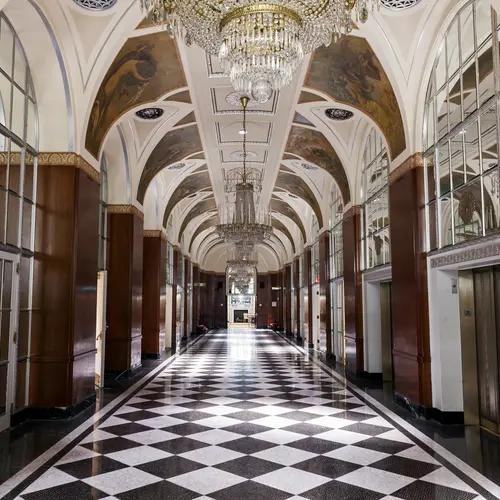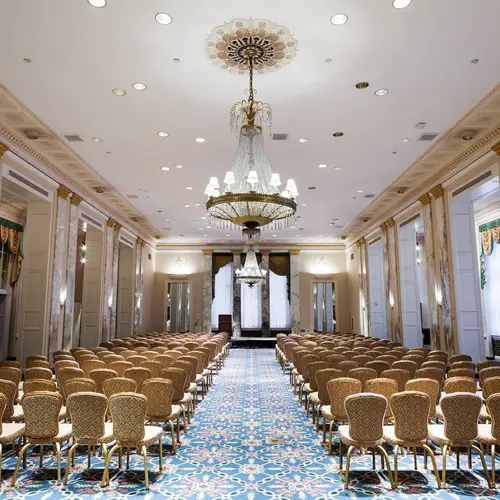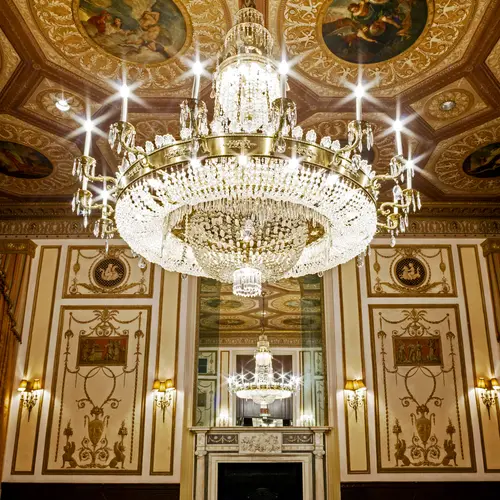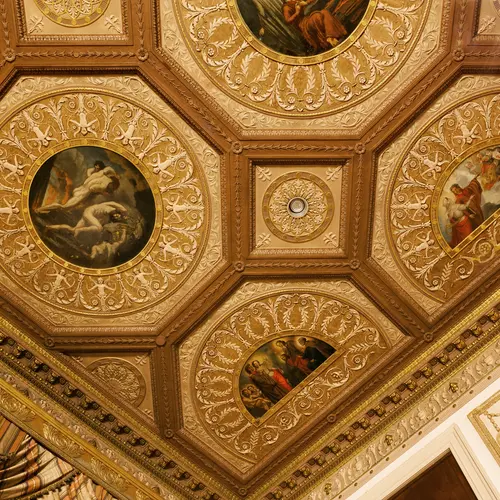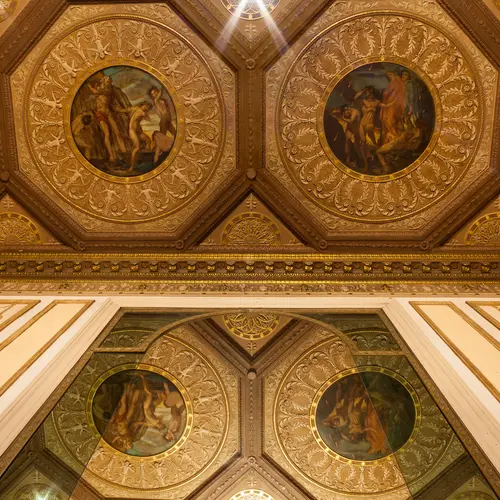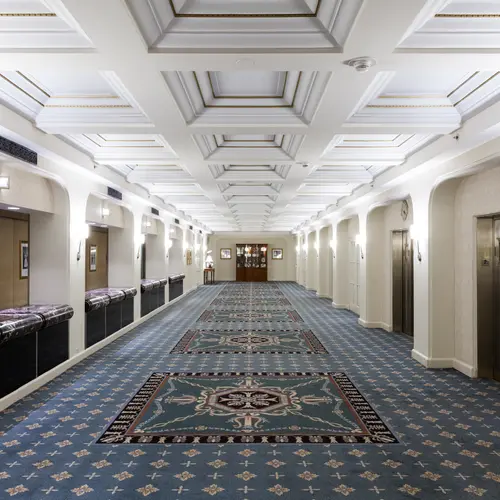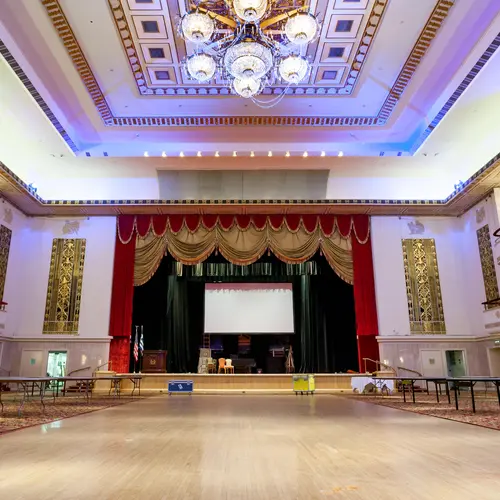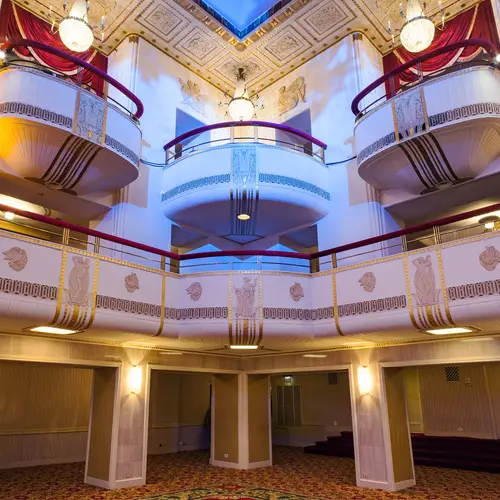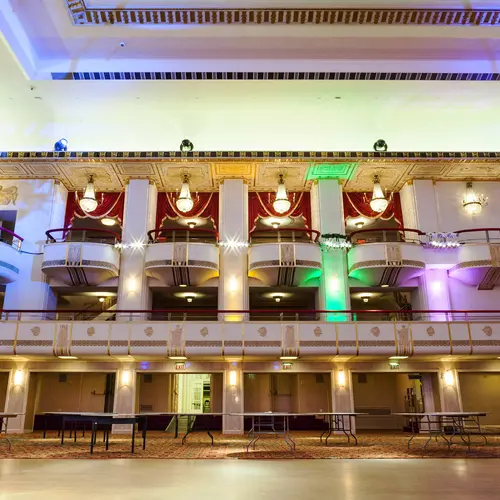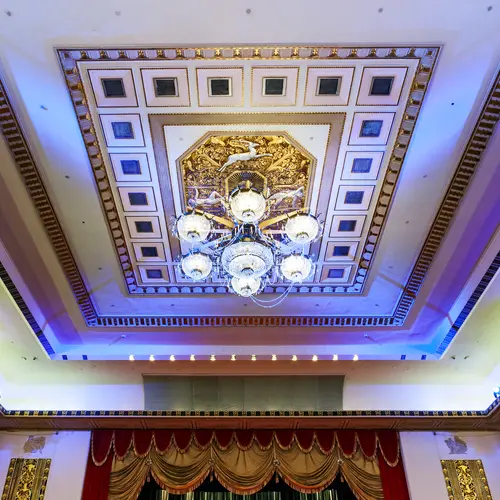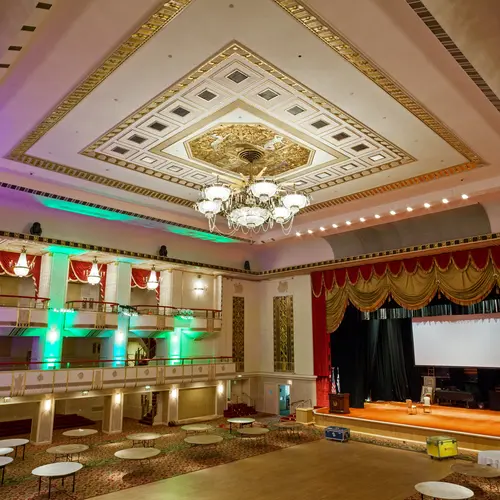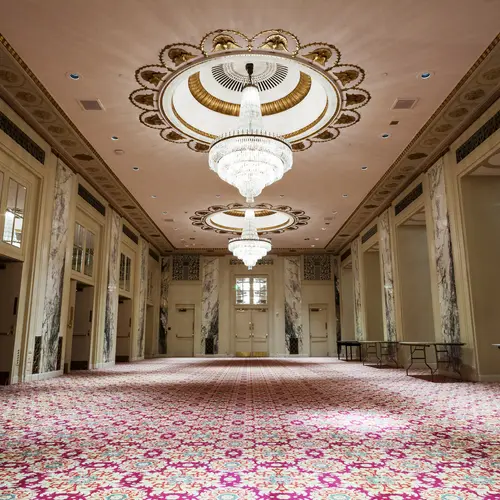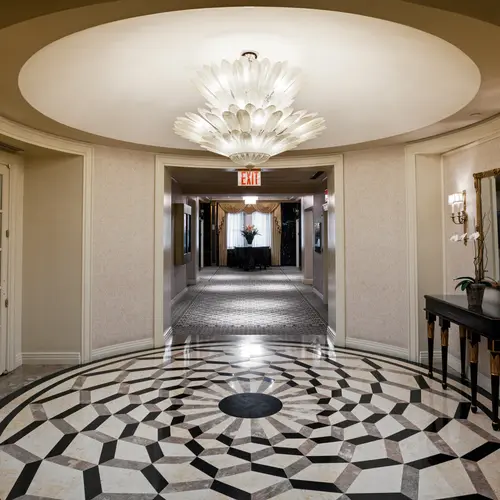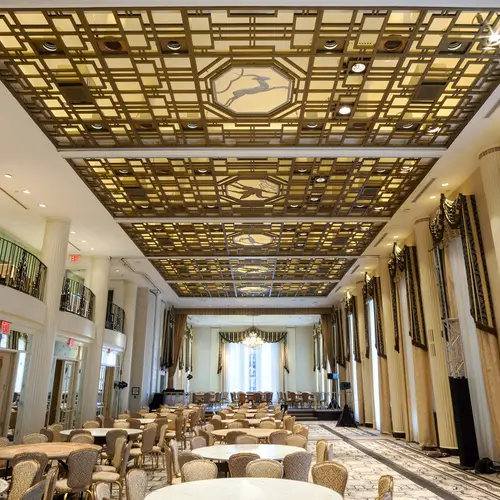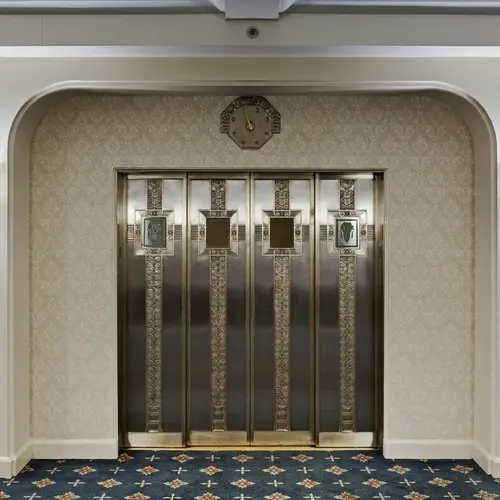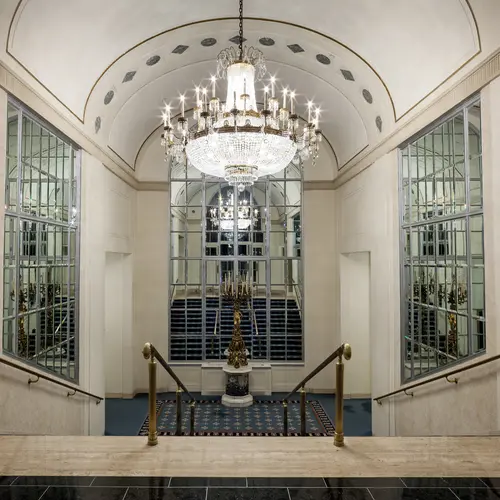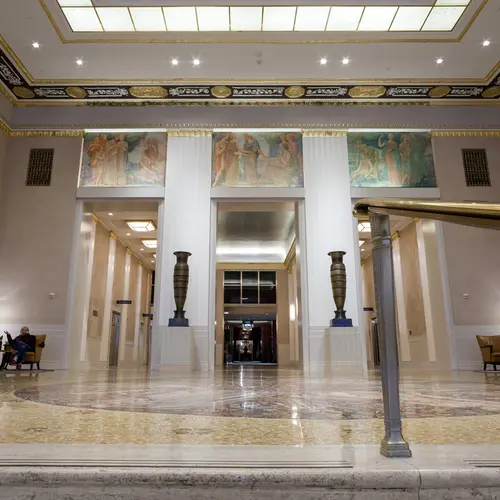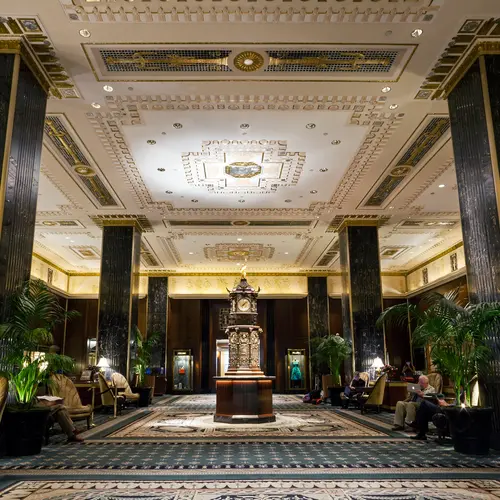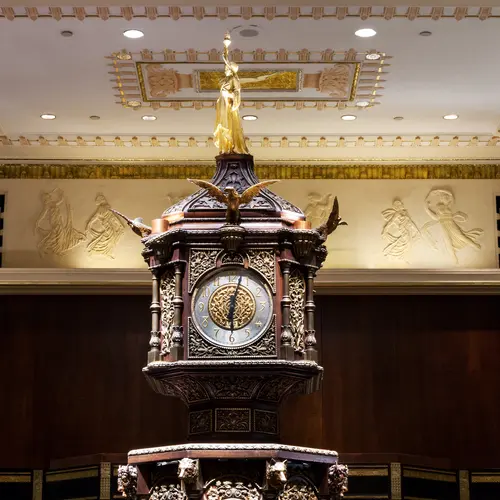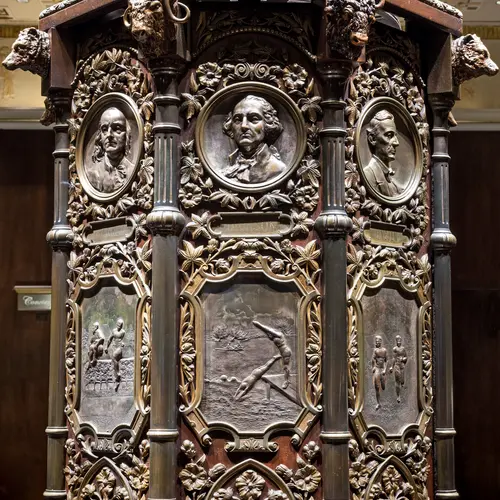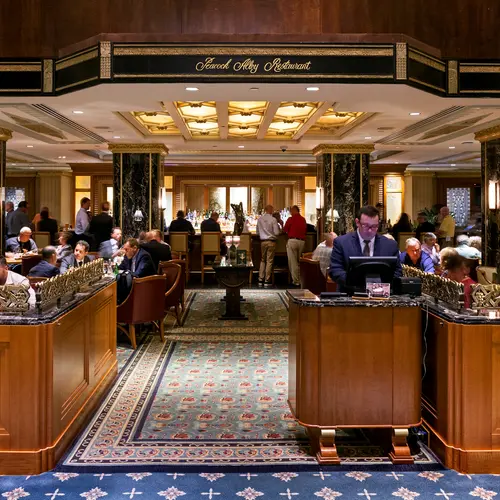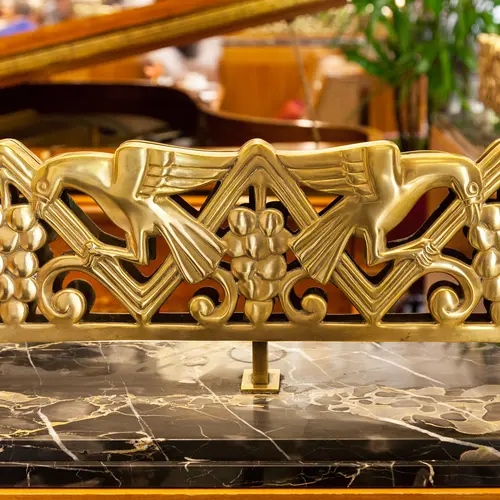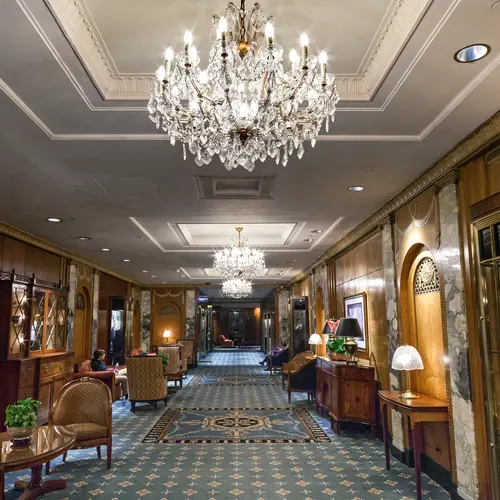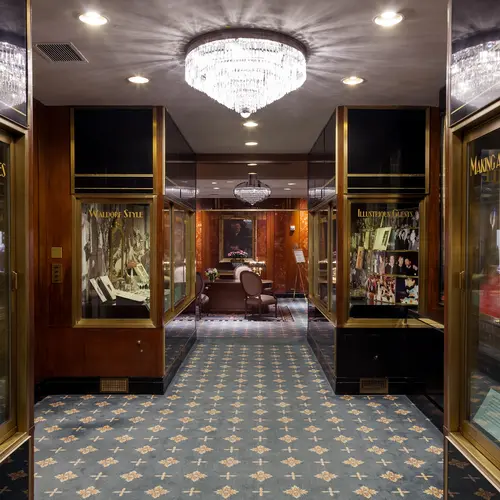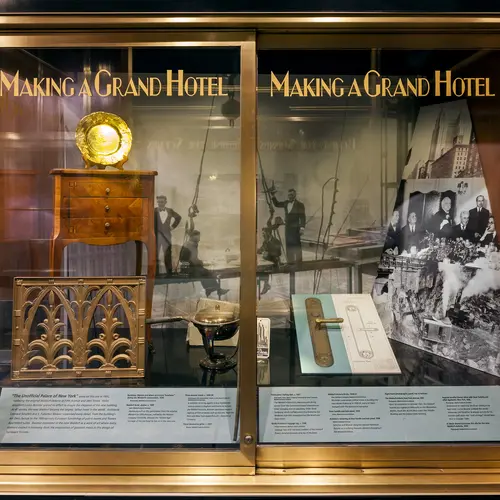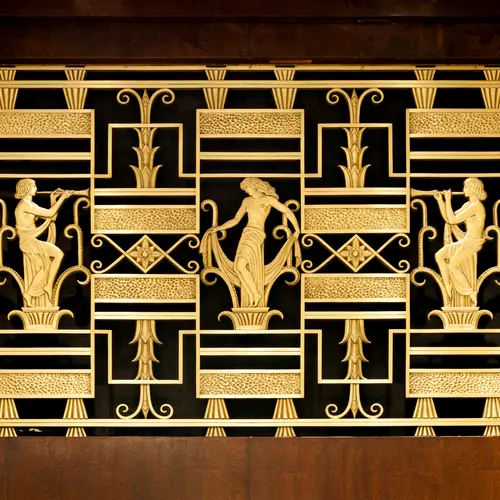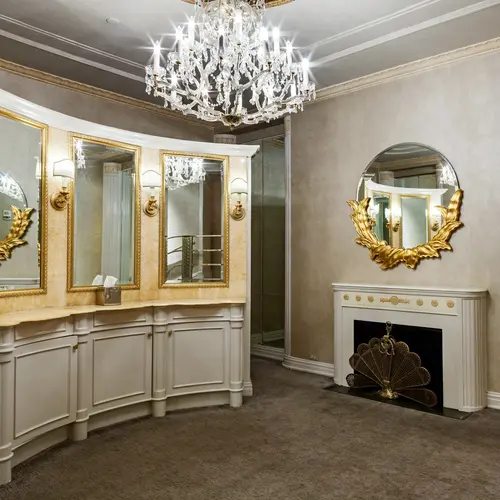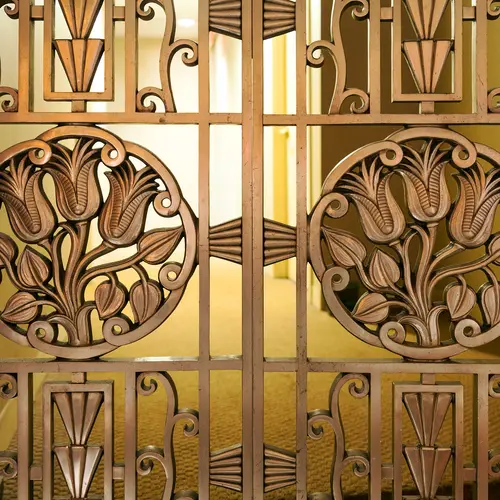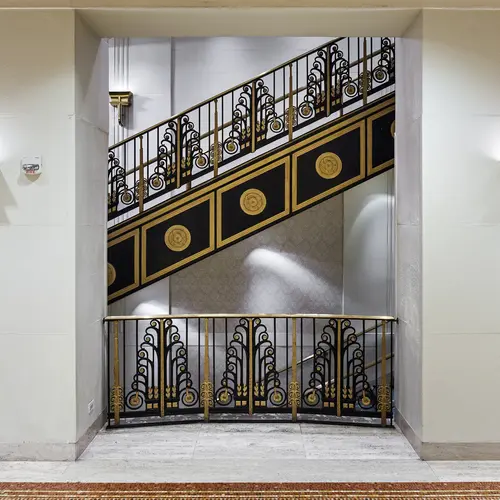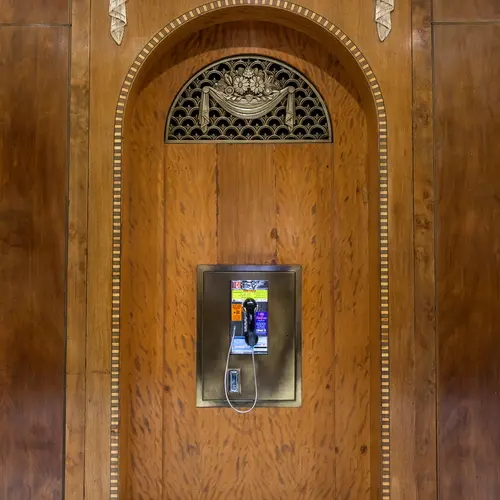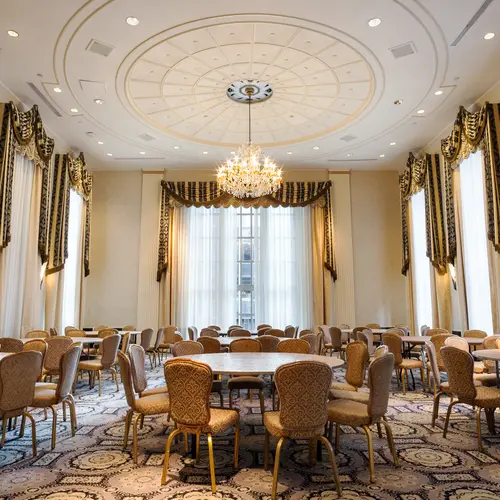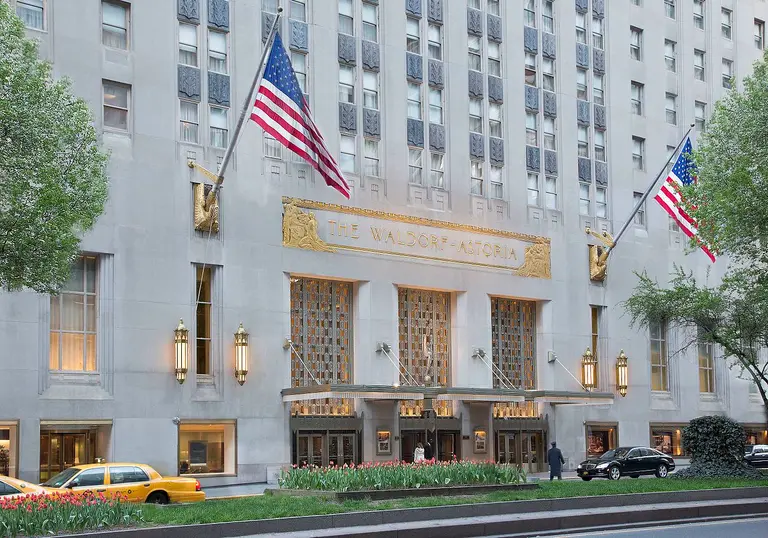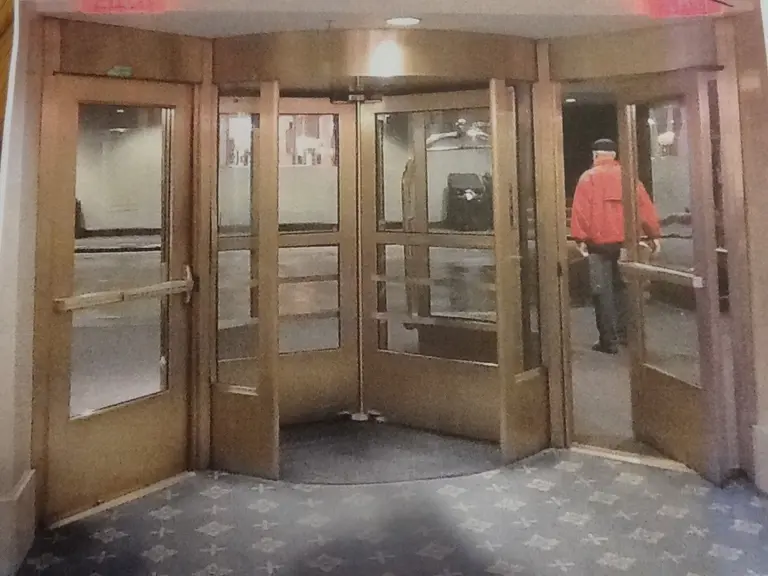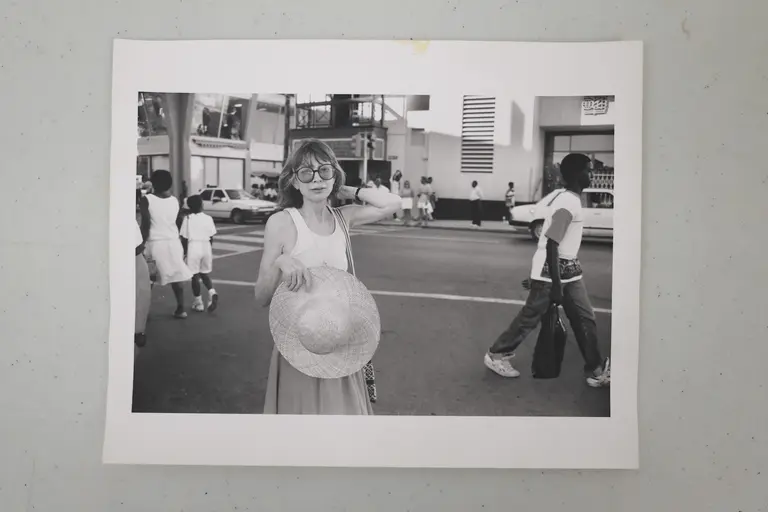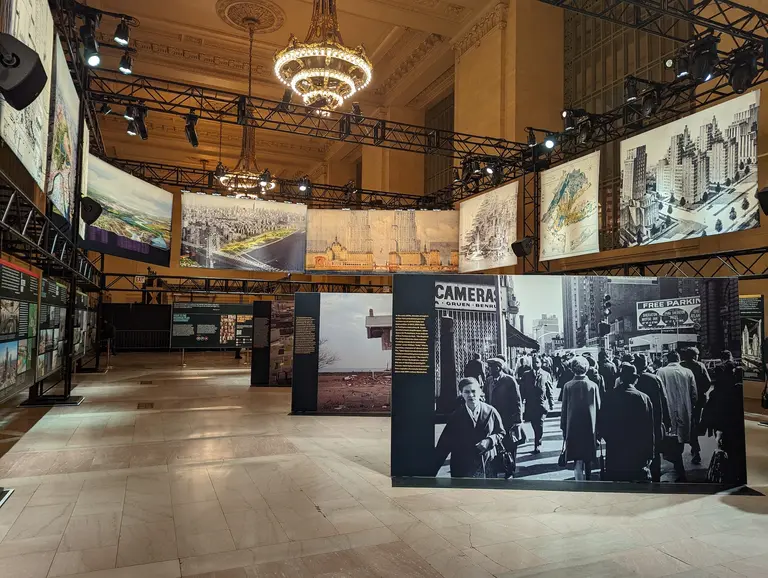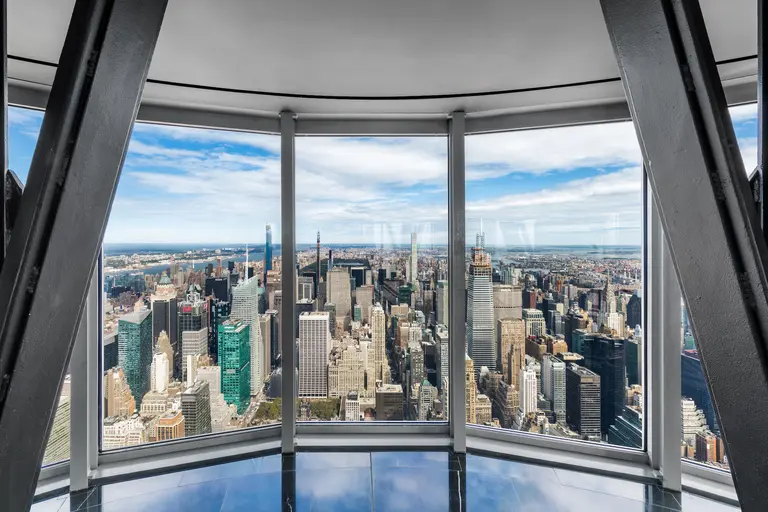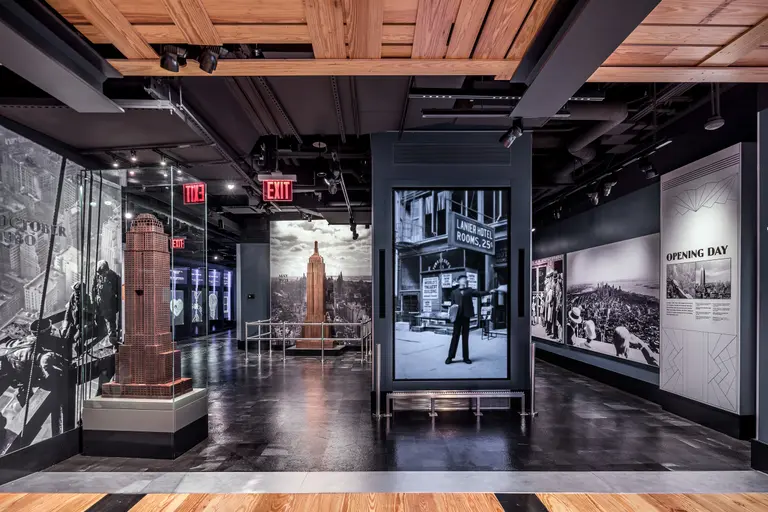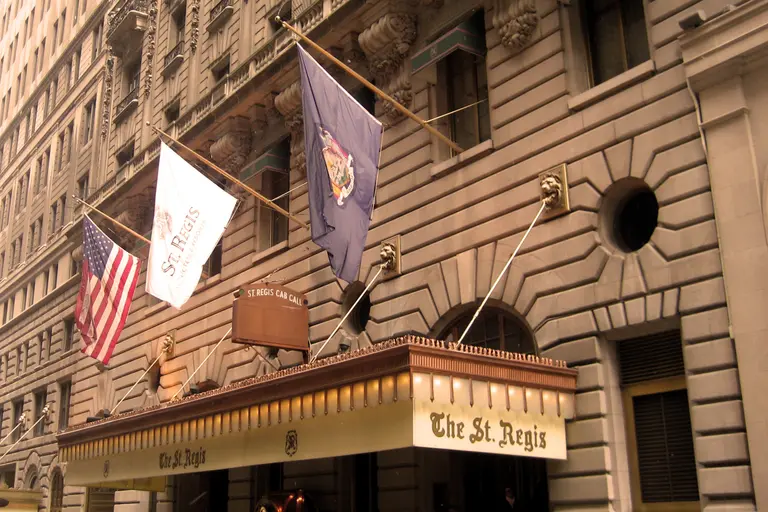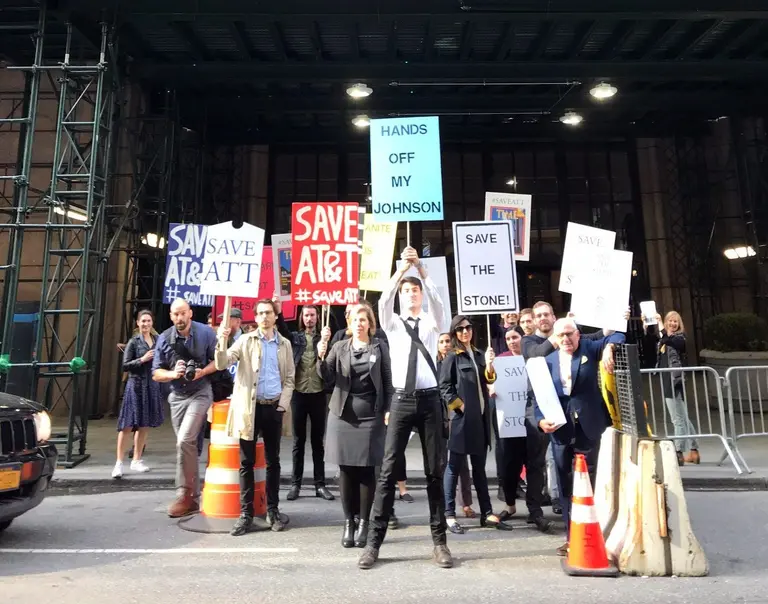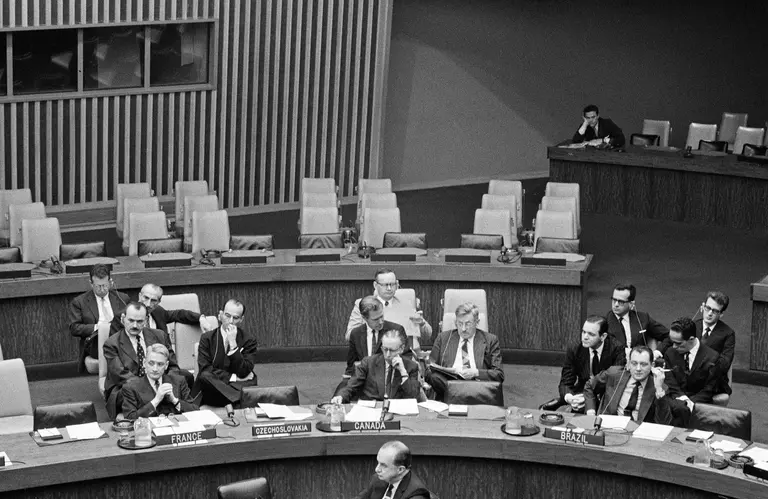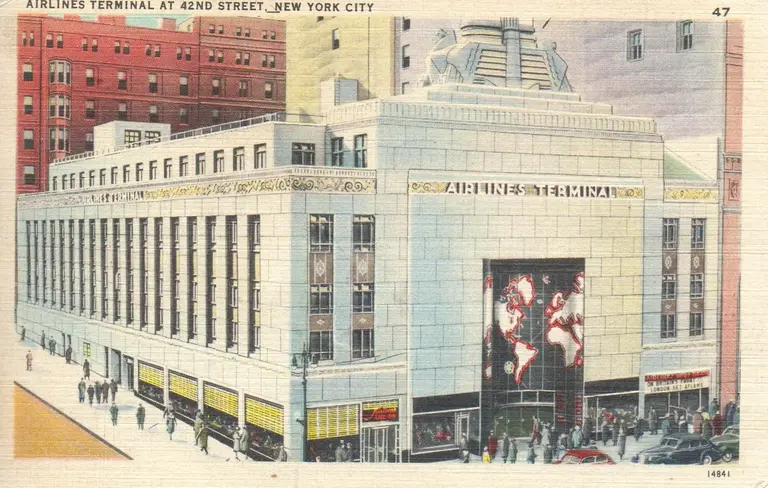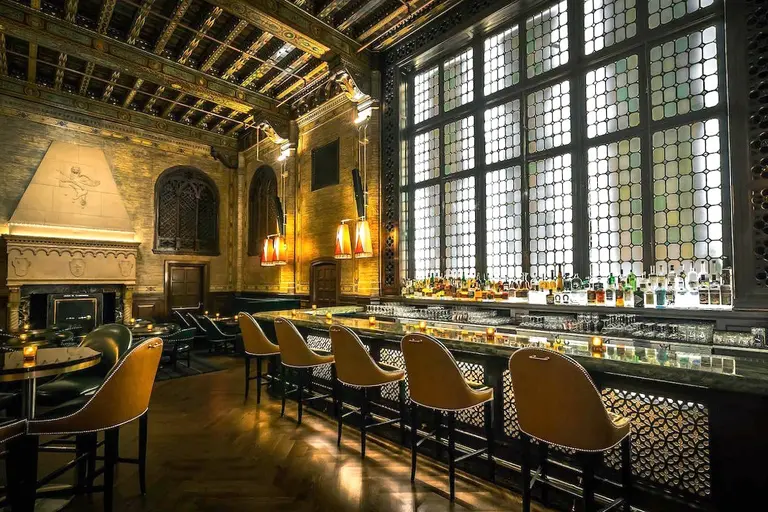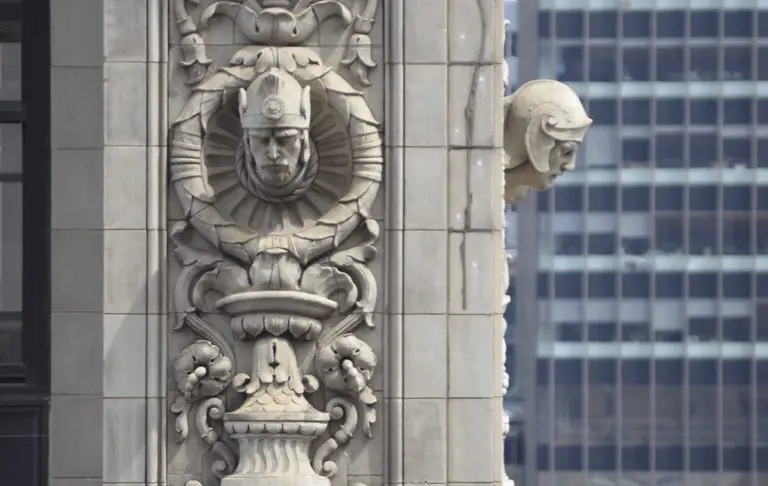Photos capture the historic glamour of the Waldorf Astoria before its renovation
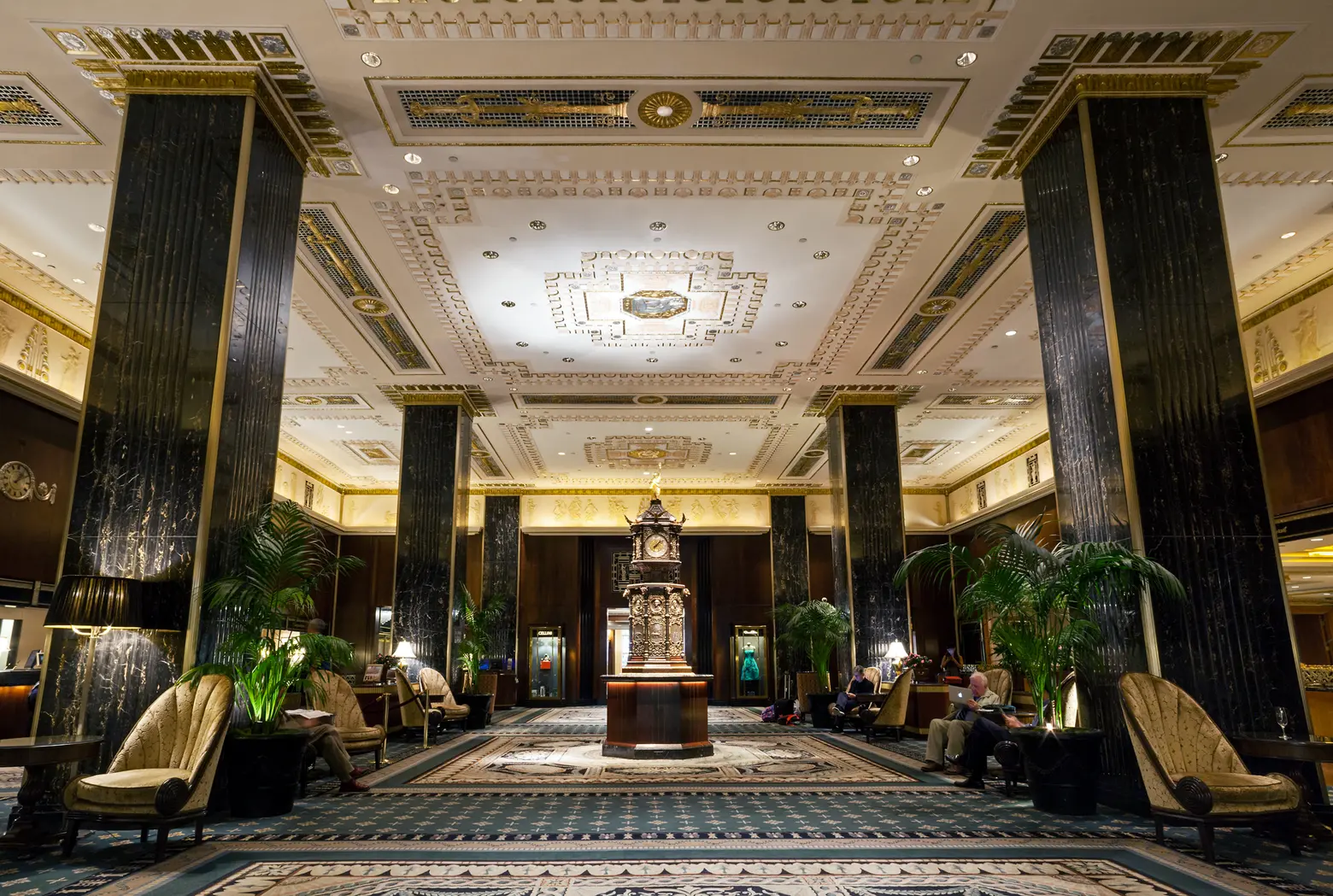
To the dismay of many New Yorkers, the Waldorf Astoria closed its doors in 2017 for a huge renovation project that will ultimately create larger hotel rooms and add a new set of luxury condos. After the plans were announced, the Landmarks Preservation Commission designated the hotel’s first three floors as an interior landmark, meaning the new owners will need to preserve the 1931 Art Deco spaces. But after a four-year hiatus (the hotel will reopen in 2021) and a completely new vibe, it’s not clear if those interiors will have the same glamorous, old-school New York vibe that they were once famous for. Luckily, photographers James and Karla Murray captured the Waldorf in all its glory before it closed its doors. Ahead, take a tour of the old Waldorf, from its iconic, two-ton lobby clock to the three-tiered grand ballroom.
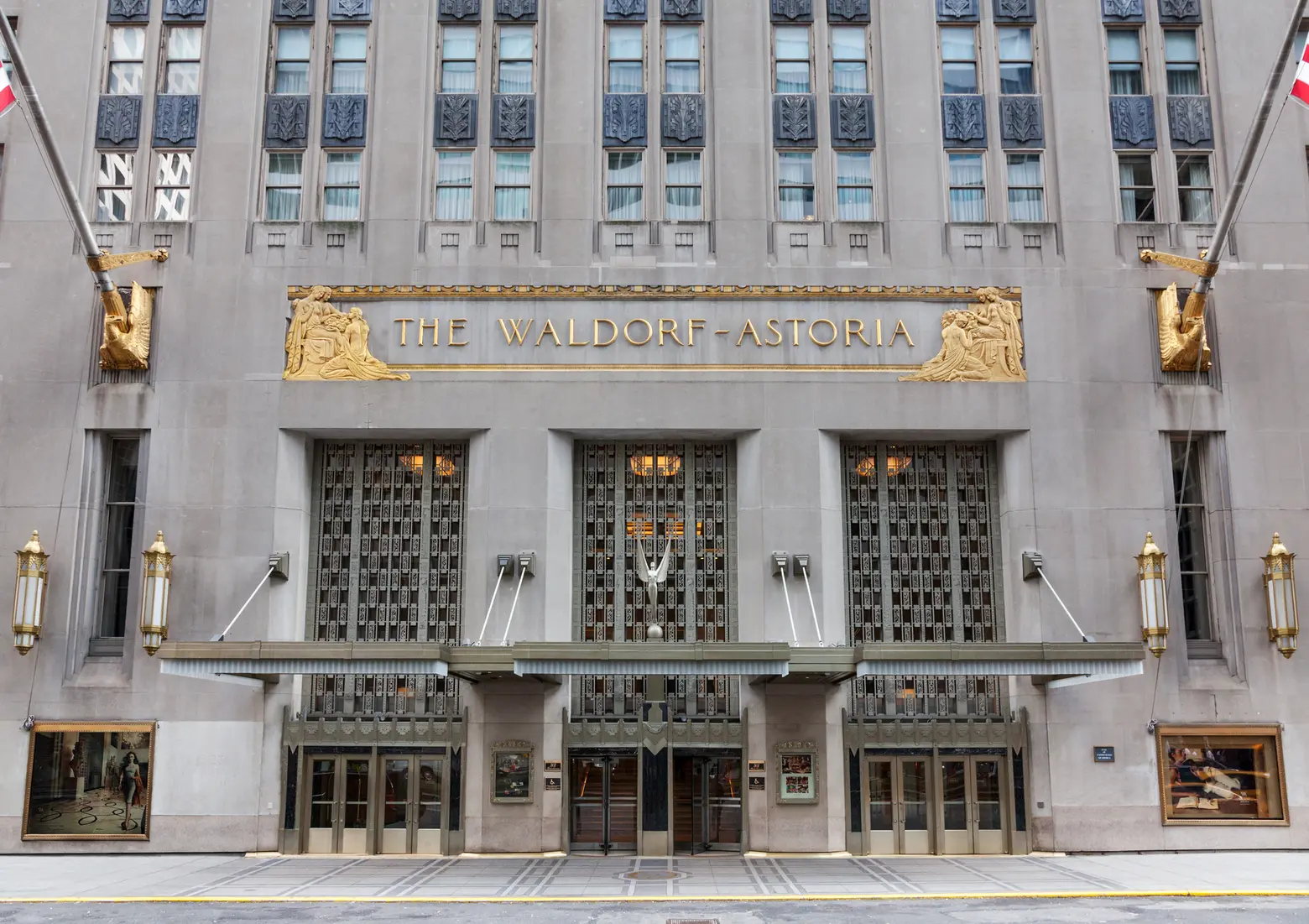 The Waldorf Astoria has been an exterior landmark since 1993
The Waldorf Astoria has been an exterior landmark since 1993
The Waldorf saga was not without drama; Chinese insurer Anbang bought the building in 2014 from the Hilton group (they will still serve as the operator) for $1.95 billion. Shortly thereafter, the company’s chairman, Wu Xiaohui, was indicted on fraud charges and the debt-ridden company was taken over by the Chinese government. And last year, the completion date was moved from 2020 to 2021. Nevertheless, construction is underway and all signs point to this reopening remaining as is.
Before closing, the 47-story building was configured as a 1,232-room hotel with the adjacent Waldorf Towers, a separate wing of 181 high-end hotel rooms and short-term rentals. The new plans call for approximately 375 luxury condos and 350 hotel rooms and suites, a drastic drop from the previous count. The plans also call for “restored public and event spaces for guests.”
Noted firm Skidmore, Owings & Merrill (SOM) signed on as the architects of the renovation. When this was announced, SOM told the Wall Street Journal that they were “diving into architectural archives, researching photos and, in some cases, unearthing pieces stored for decades to plan a restoration of the landmark exteriors as well as the interior public spaces.” That said, take a tour of some of the Waldorf’s most celebrated spaces:
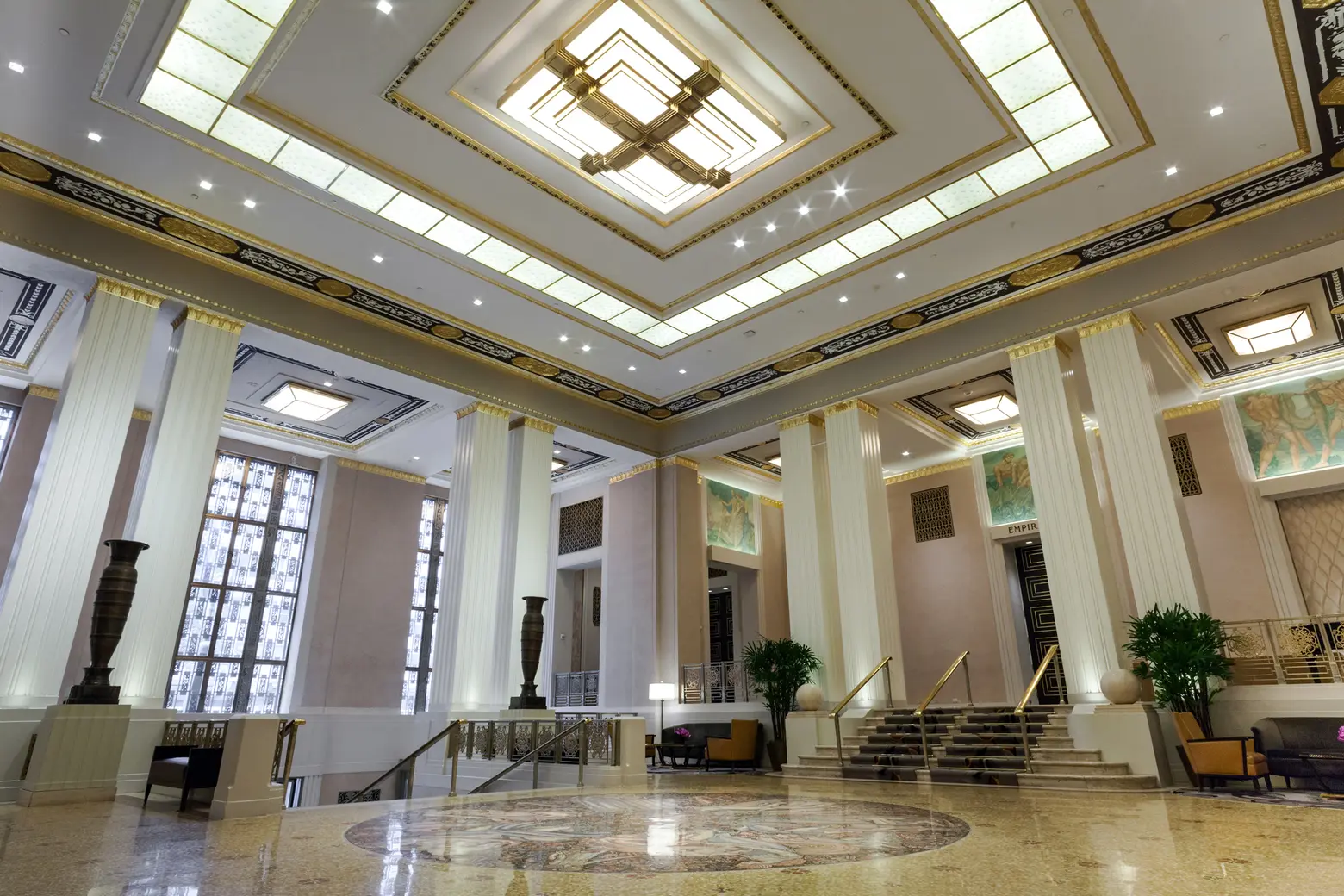
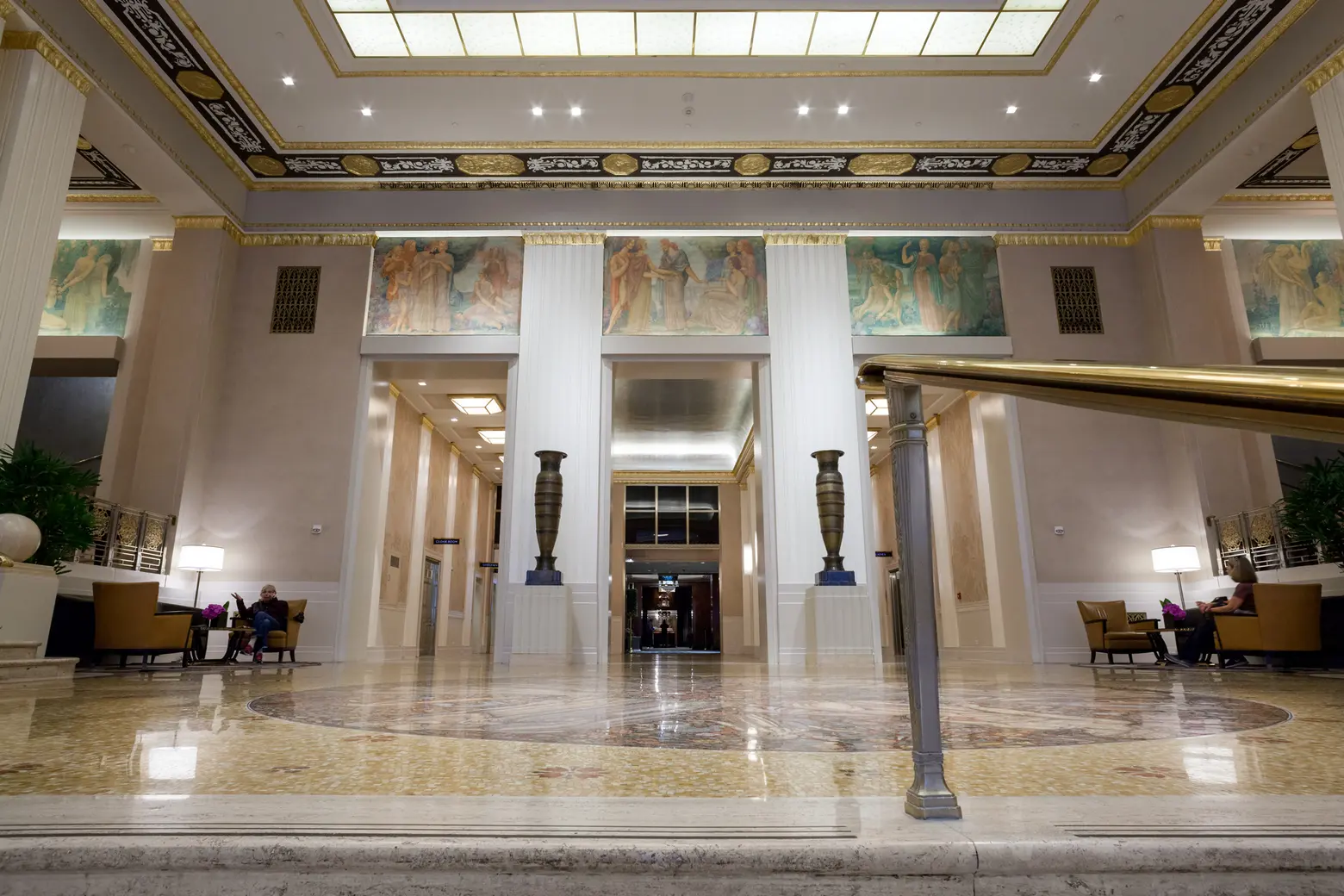
Guests came in through the main Park Avenue entrance into the foyer, which boasts 13 murals depicting classical men and women in pastoral settings and an elaborate floor mosaic, all by French artist Louis Rigal. Titled “Wheel of Life,” the mosaic is made up of 140,000 marble tiles and represents the six stages of life, from birth to death. It was produced in Long Island City by V.
Foscato Inc.

The main lobby features wood-paneled walls, black marble columns, nickel-bronze metal ornamentation, and gilded plaster ceiling reliefs that depict “swords, leaping gazelles, baskets of flowers and nude females, some holding masks,” according to the LPC.

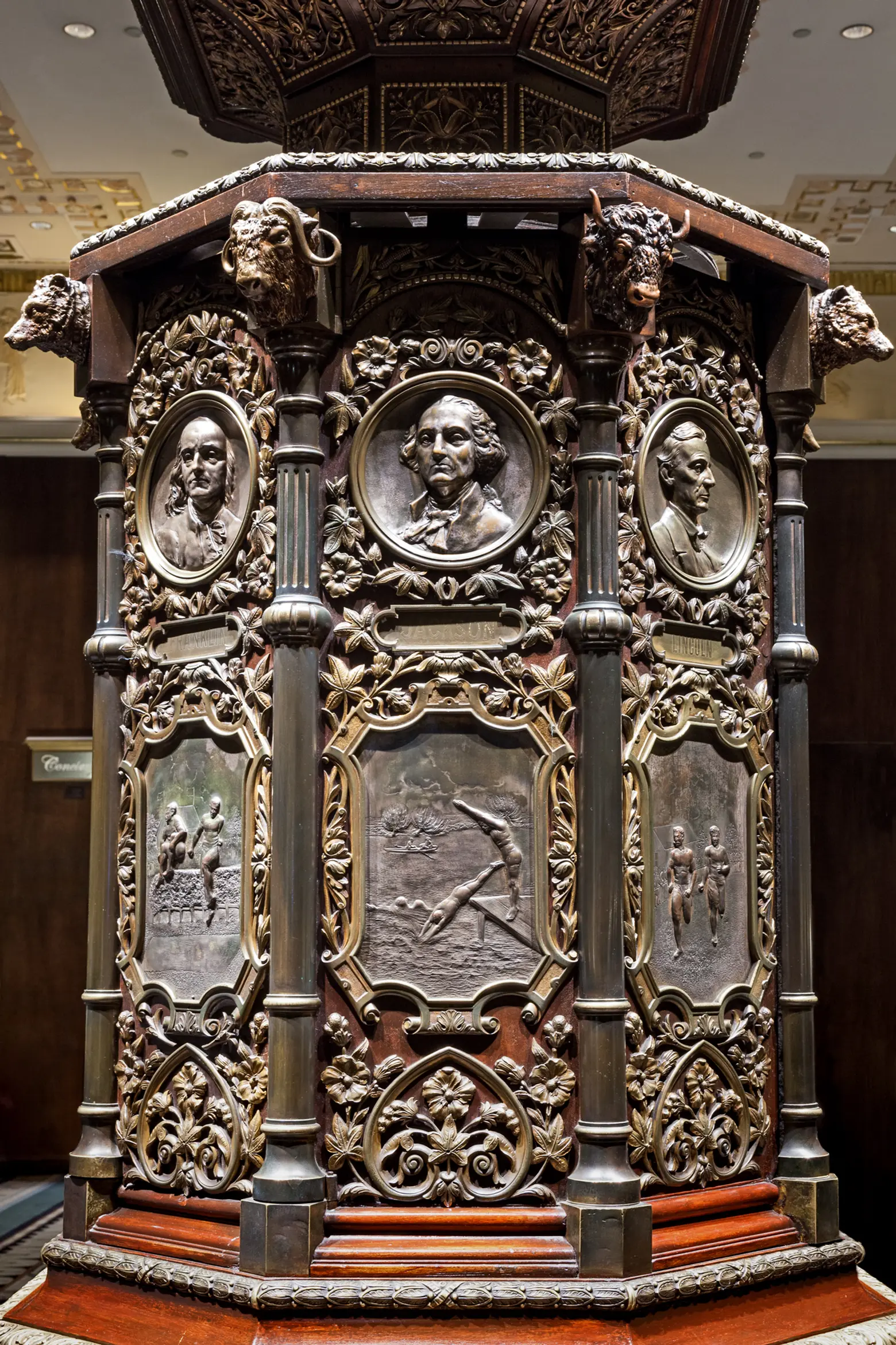
The highlight of the lobby is the two-ton, bronze-and-mahogany clock. It was built by the Goldsmiths Company of London for Chicago’s 1893 World Columbia Exposition upon a commission from Queen Victoria to show the friendship between the U.S. and England. John Jacob Astor later purchased it for the original Waldorf Hotel. Its octagonal base is adorned with eight busts–Presidents Washington, Lincoln, Grant, Jackson, Harrison, Cleveland, along with Queen Victoria and Benjamin Franklin–and its four faces tell the time of New York, Paris, Greenwich, and Madrid.
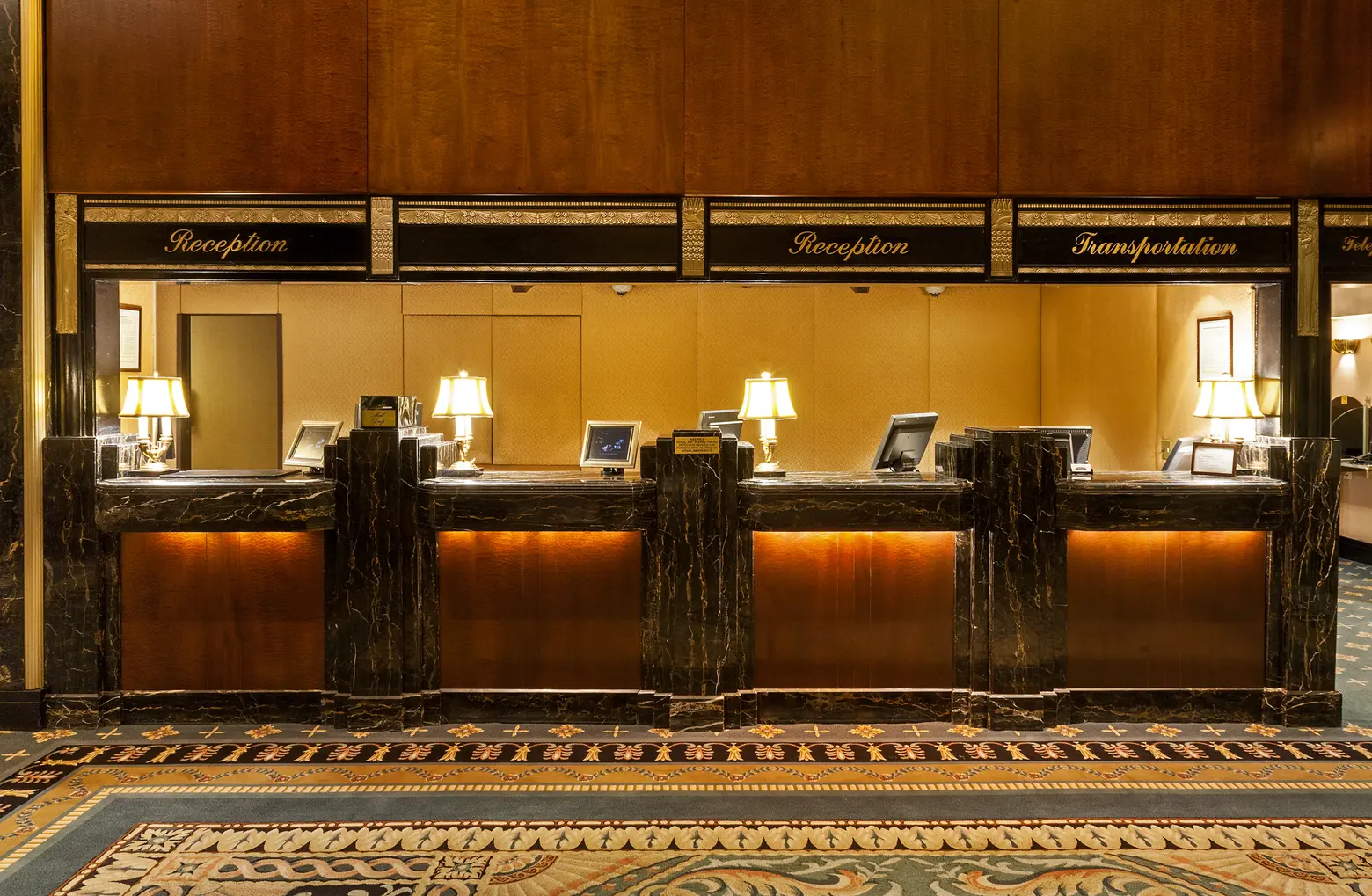
The reception desk features the same black marble. SOM had said that their plan included “moving the reception desks south of the lobby and opening up three coves in the Grand Ballroom ceiling.” It’s not clear if this is part of the final plan.
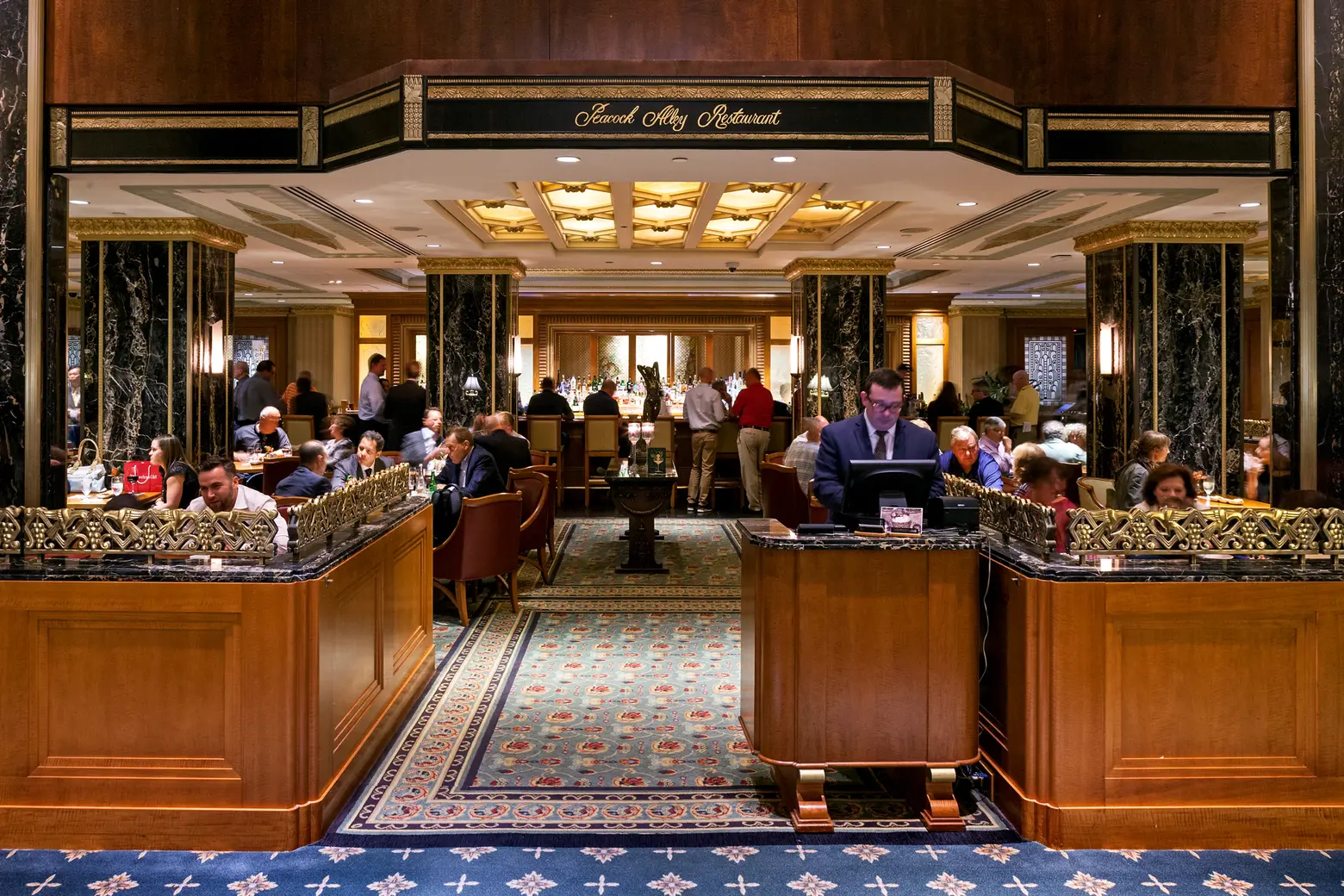
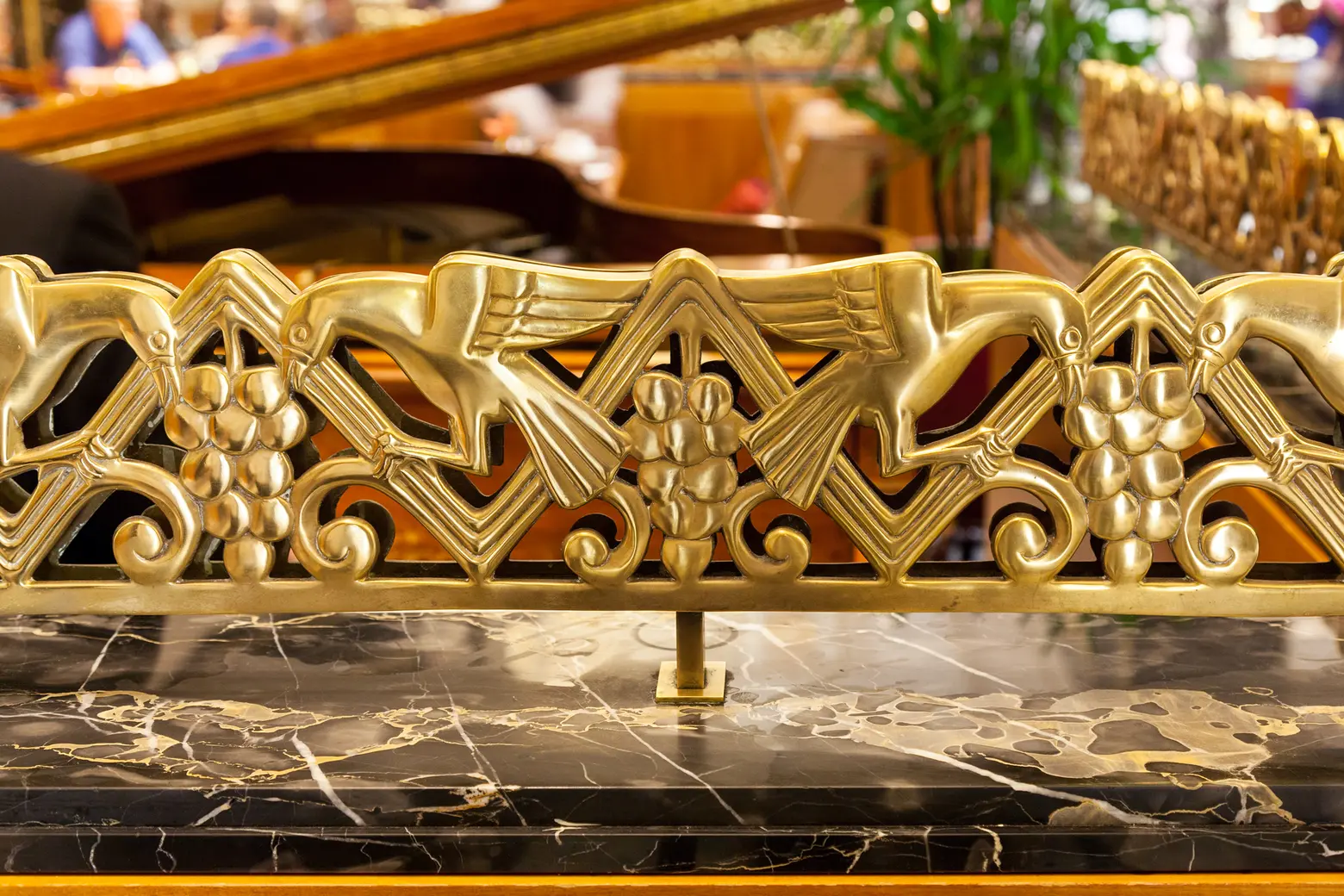
Off the lobby is the famed Peacock Alley restaurant. Prior to closing, another restaurant called Sir Harry’s operated adjacent to Peacock Alley. SOM has said that they will give this space back to Peacock and restore its ceiling, floors, and original lighting.
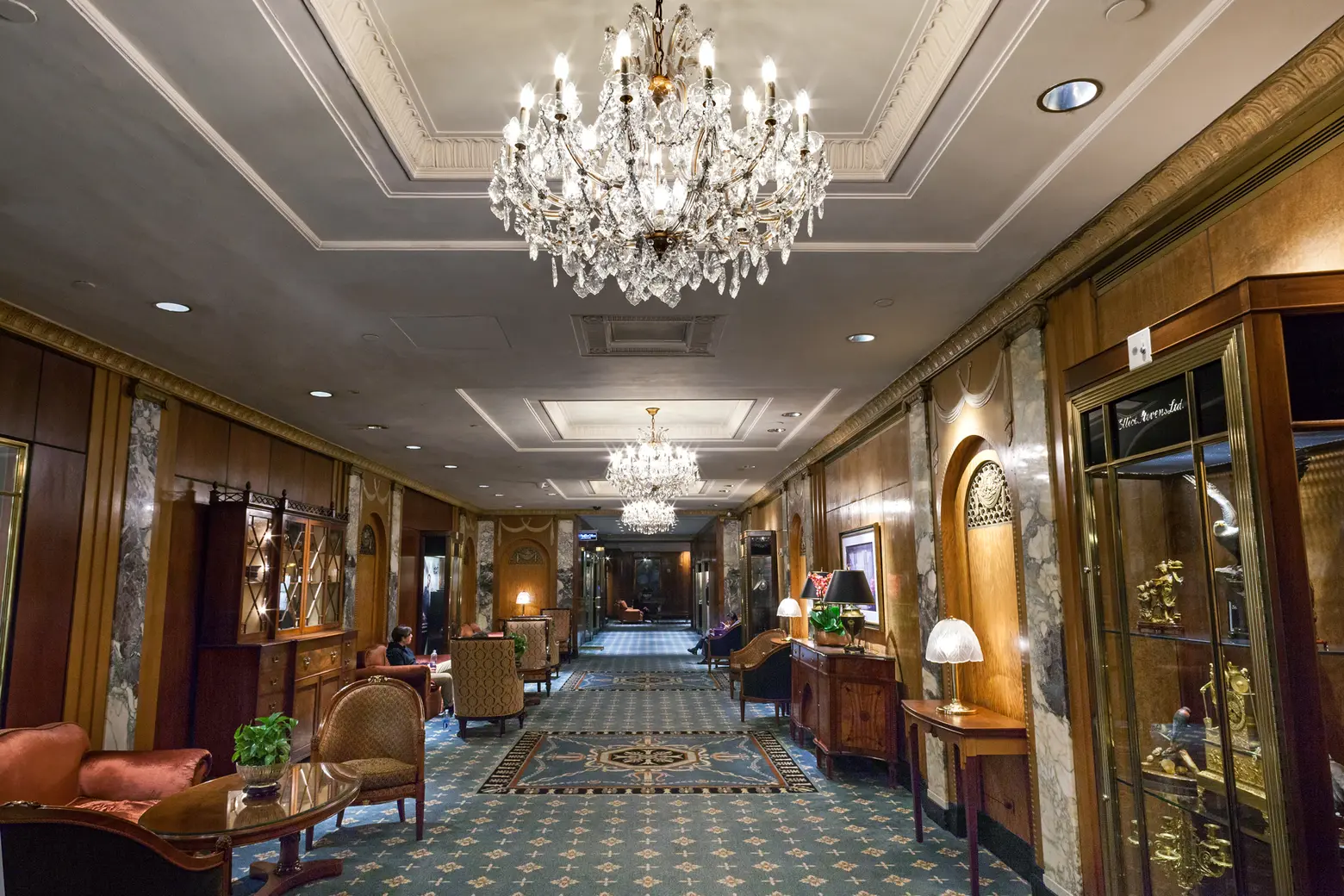
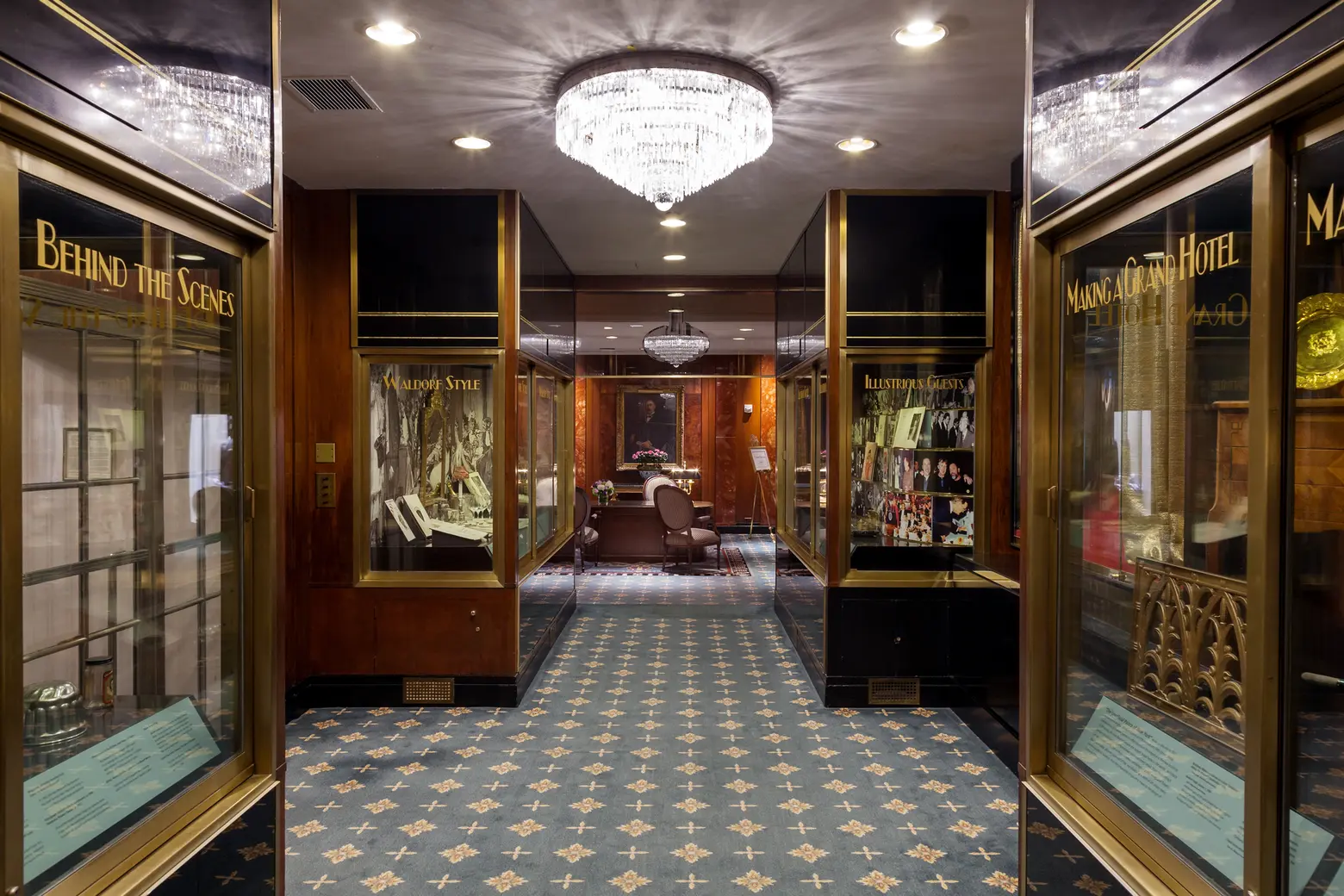
Running from Park to Lexington Avenues on the first floor are a series of arcades that showcase historic artifacts from the Waldorf’s past.
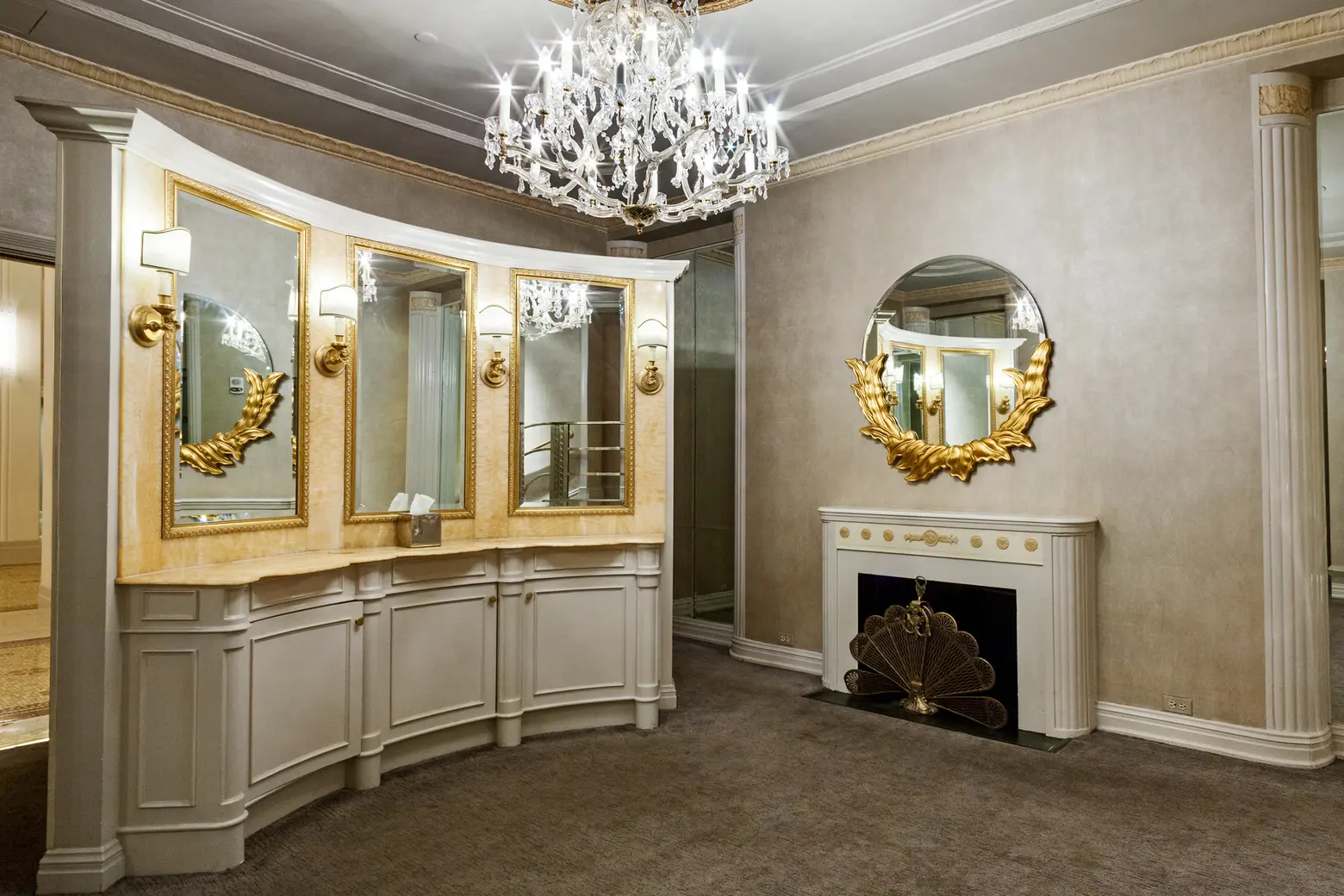
The ladies lounge is a great example of how high-end the Waldorf was in its heyday. Just a few from the long list of notable guests include Queen Elizabeth II and Prince Philip, Cary Grant, the Dalai Lama, Marilyn Monroe, Judy Garland, Muhammad Ali, Henry Kissinger, and Elizabeth Taylor. In fact, Herbert Hoover lived at the Waldorf for more than 30 years after his presidency.
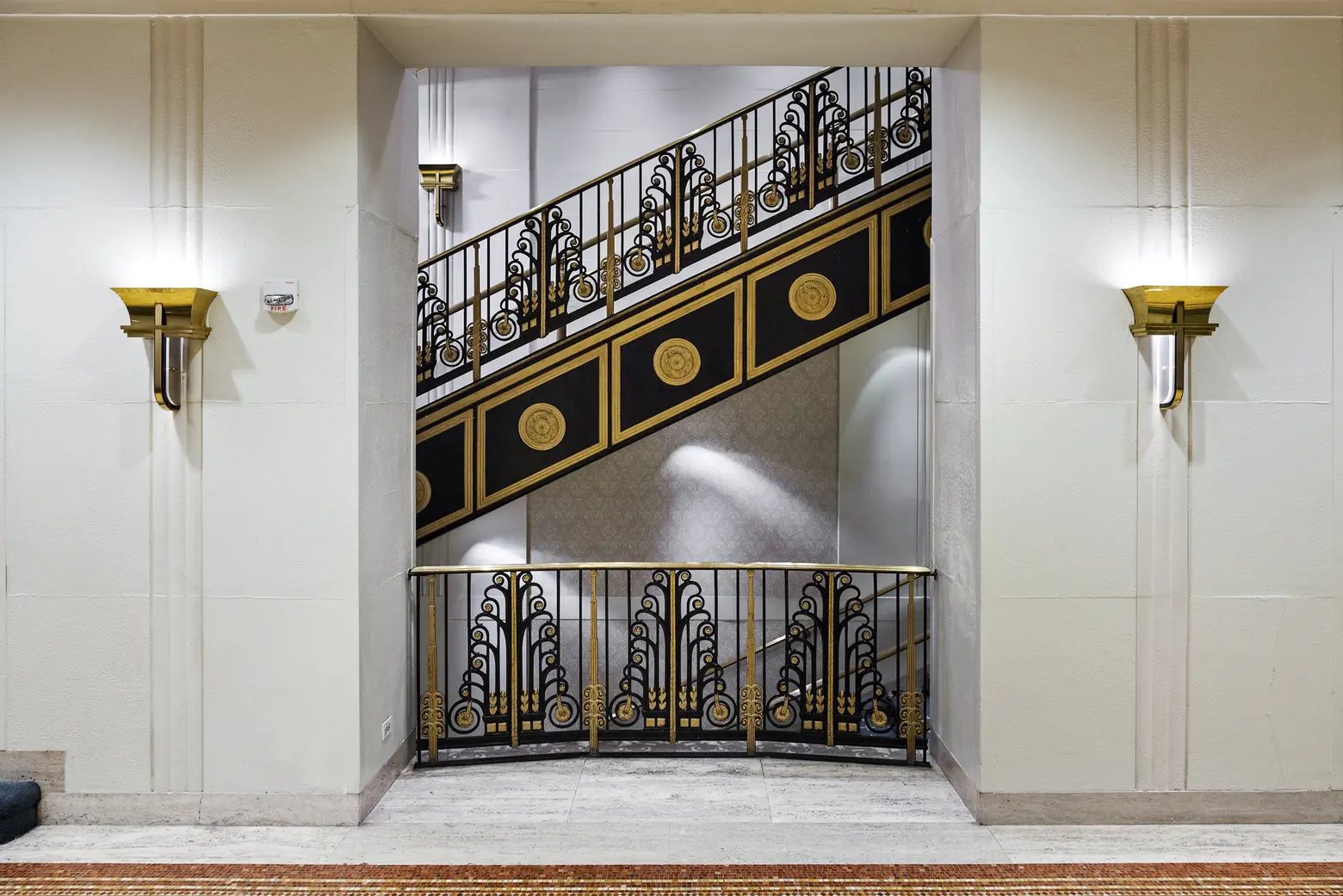
The double staircases connect the three public floors and feature “frozen fountain” balustrades.
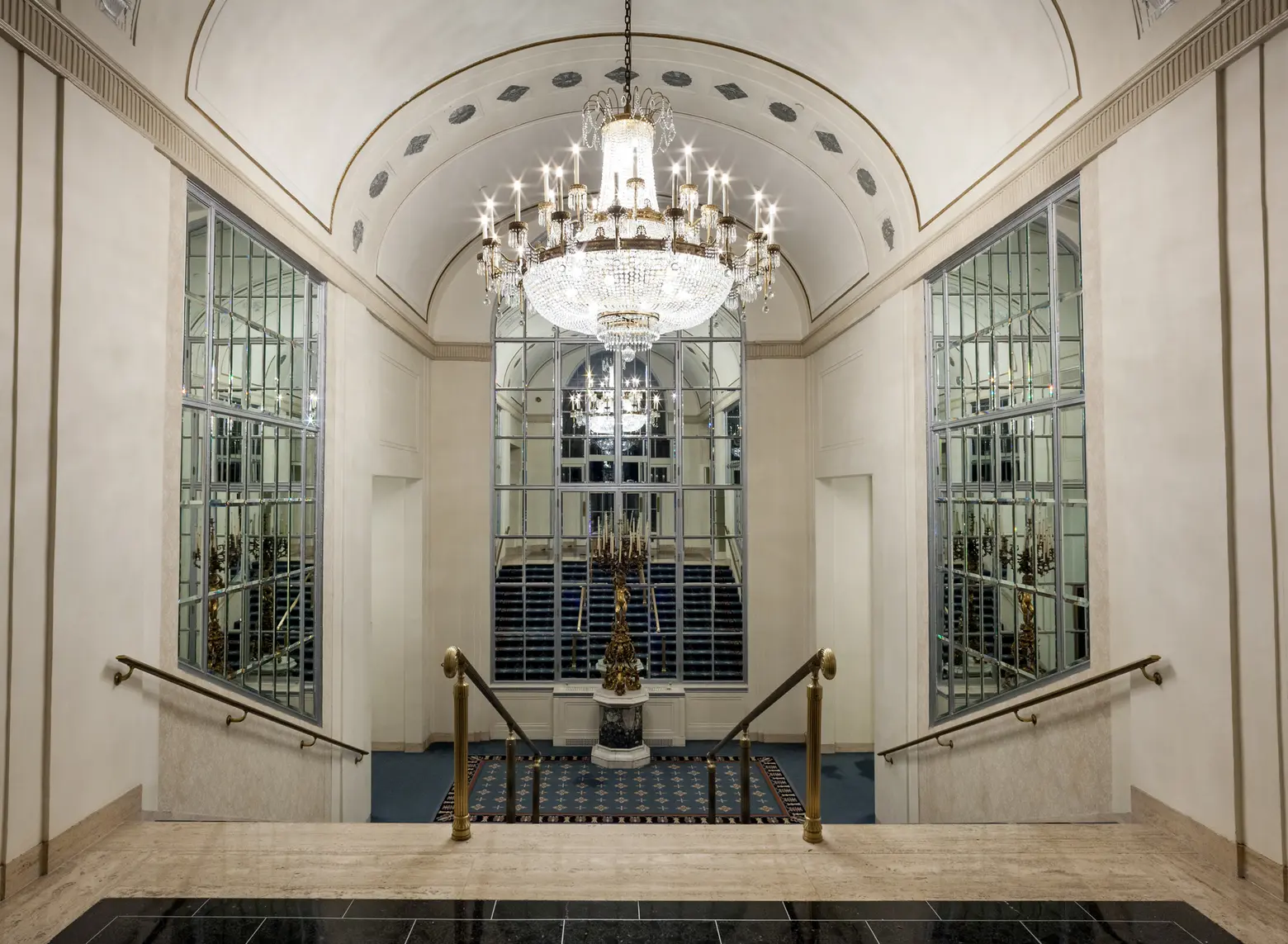
Upstairs, the staircase culminates in a dramatic domed ceiling with a dripping crystal chandelier.
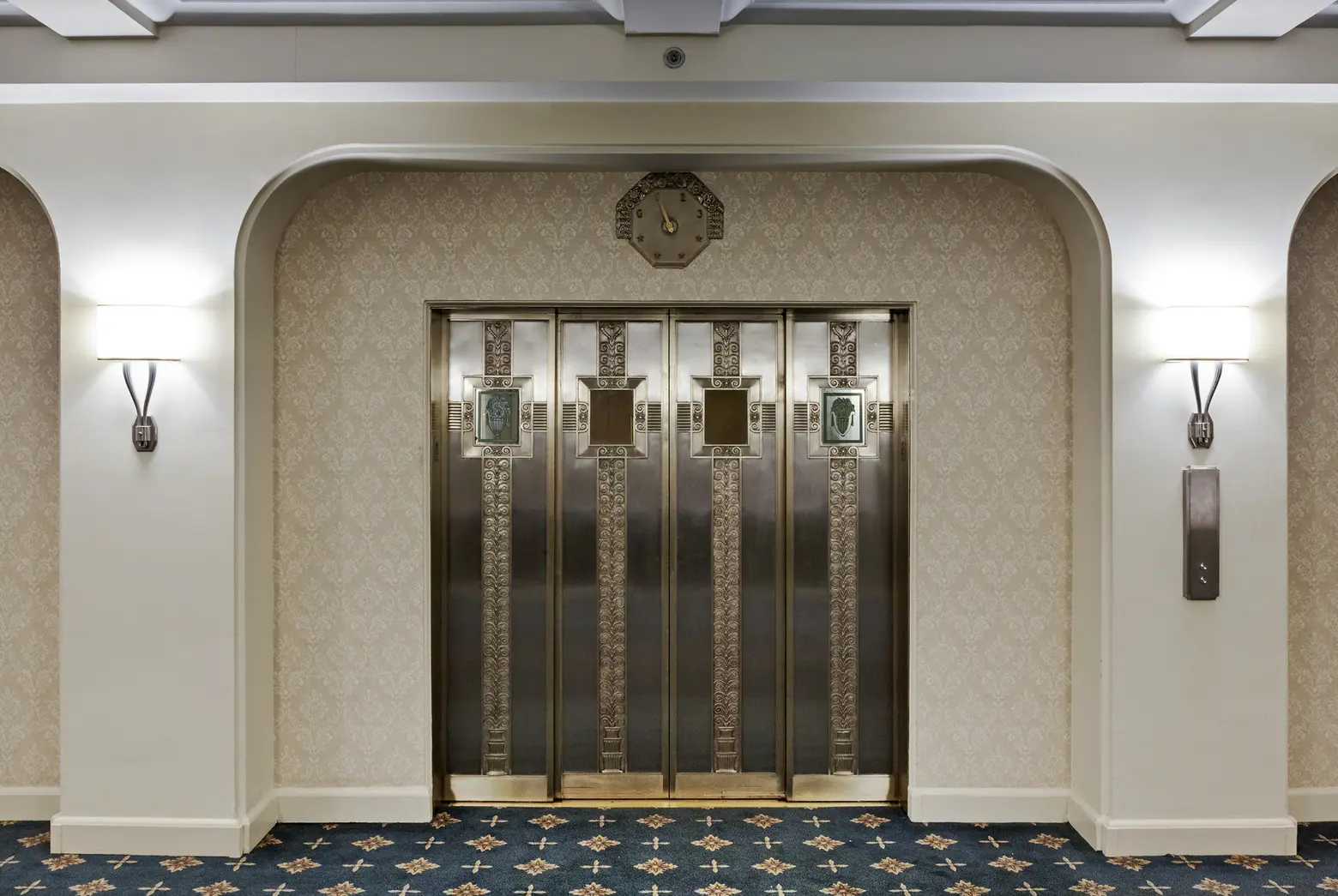
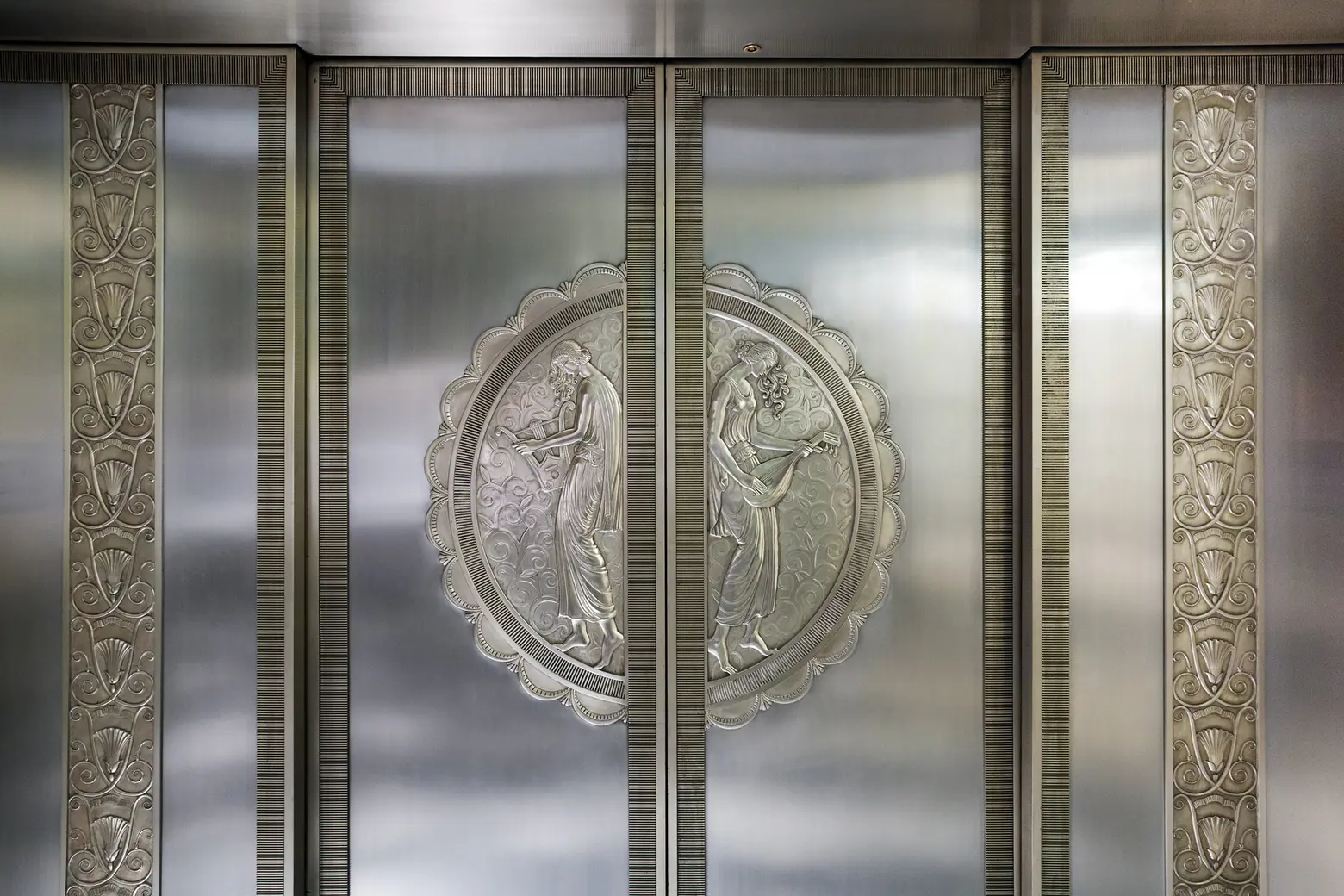
The elevator banks are equally ornamental, with their silver reliefs of musical persons. It’s thought that Louis Regal designed these as well.
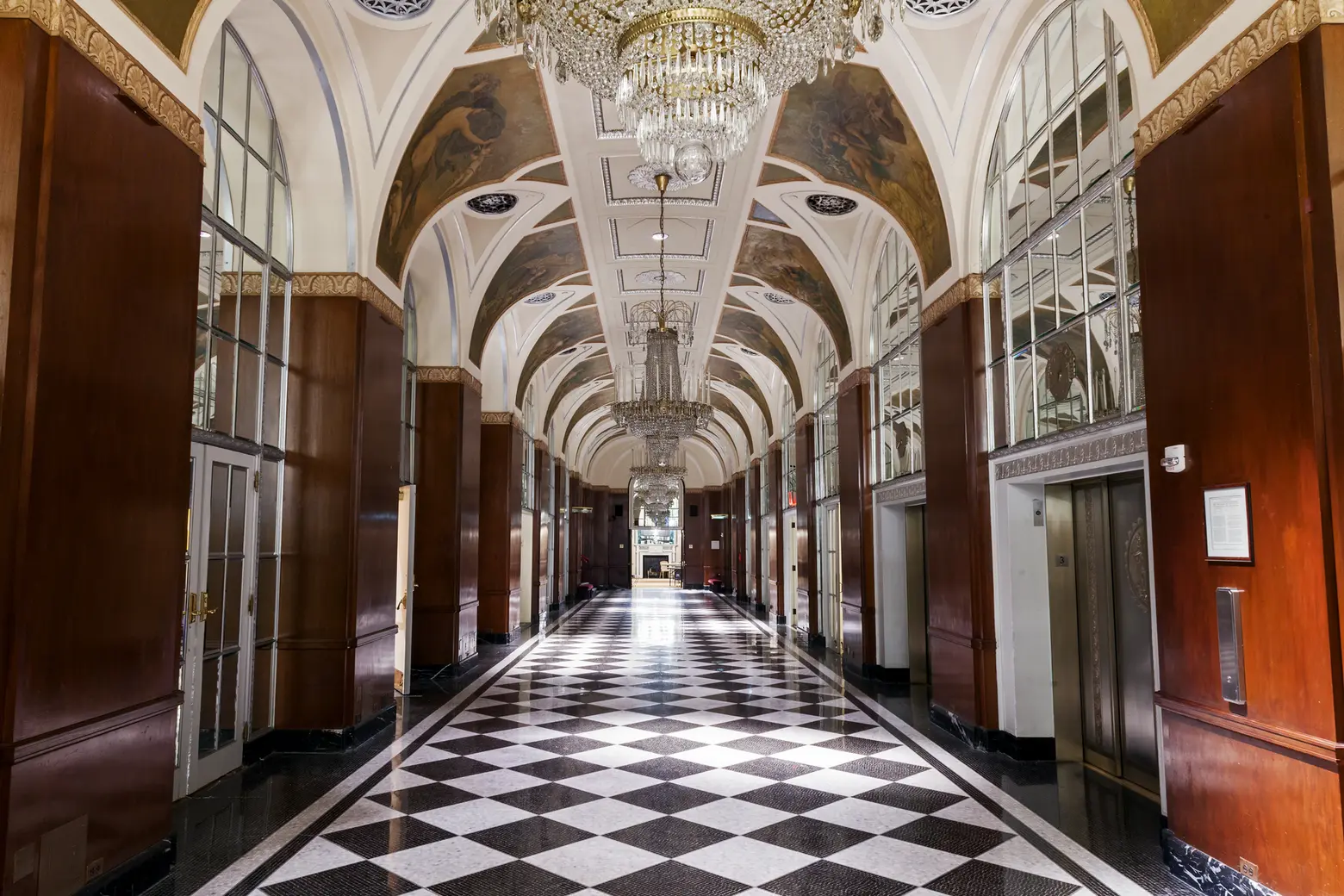
On the third floor, one can walk through the Silver Gallery, a mirrored hallway that connects the hotel’s four ballrooms. This space has a black-and-white mosaic floor, several Art Deco chandeliers, and a vaulted ceiling featuring 16 murals painted by artist Edward Emerson Simmons that represent the 12 months and four seasons. The murals are one of the only things that were salvaged from the original Fifth Avenue location of the hotel.
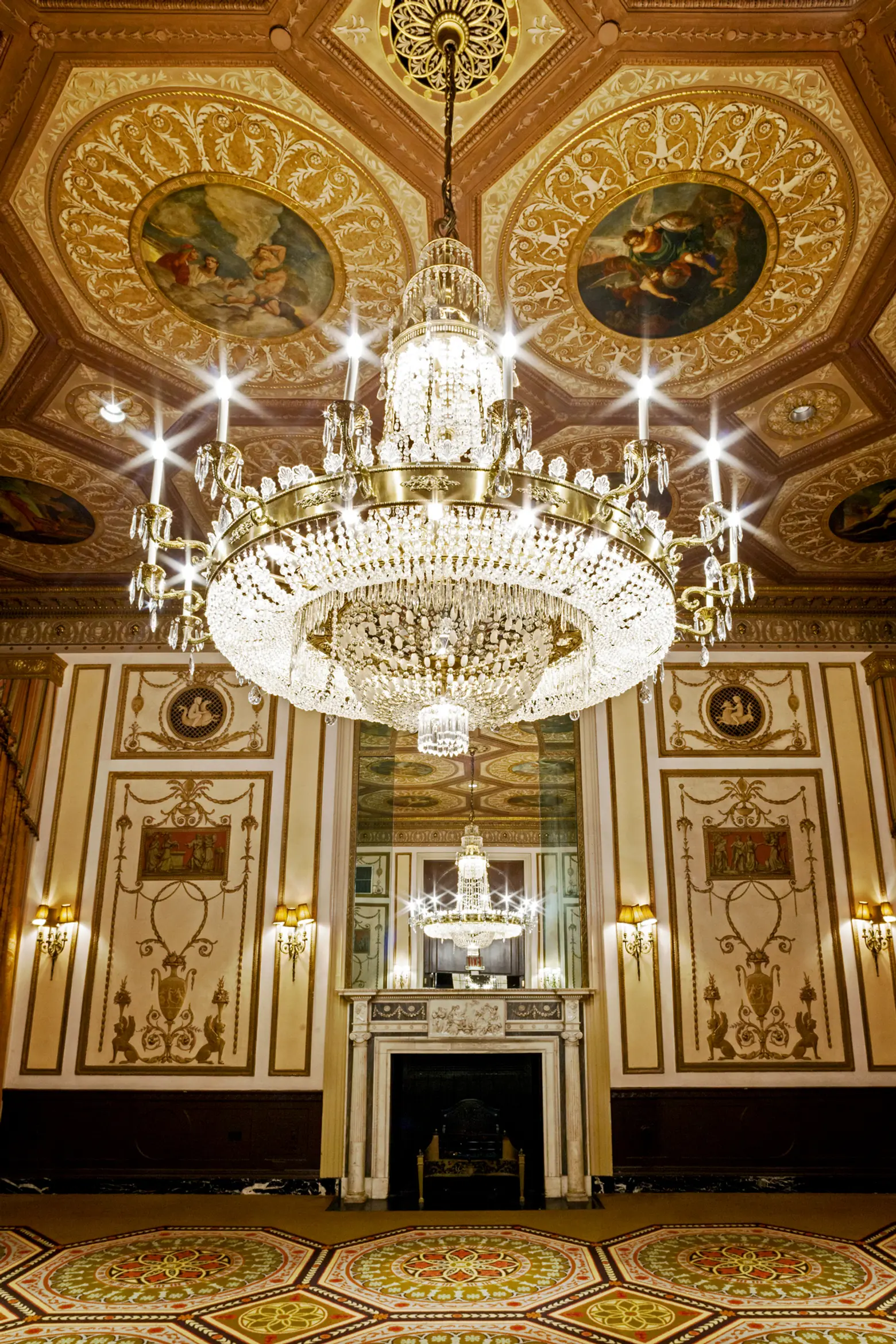
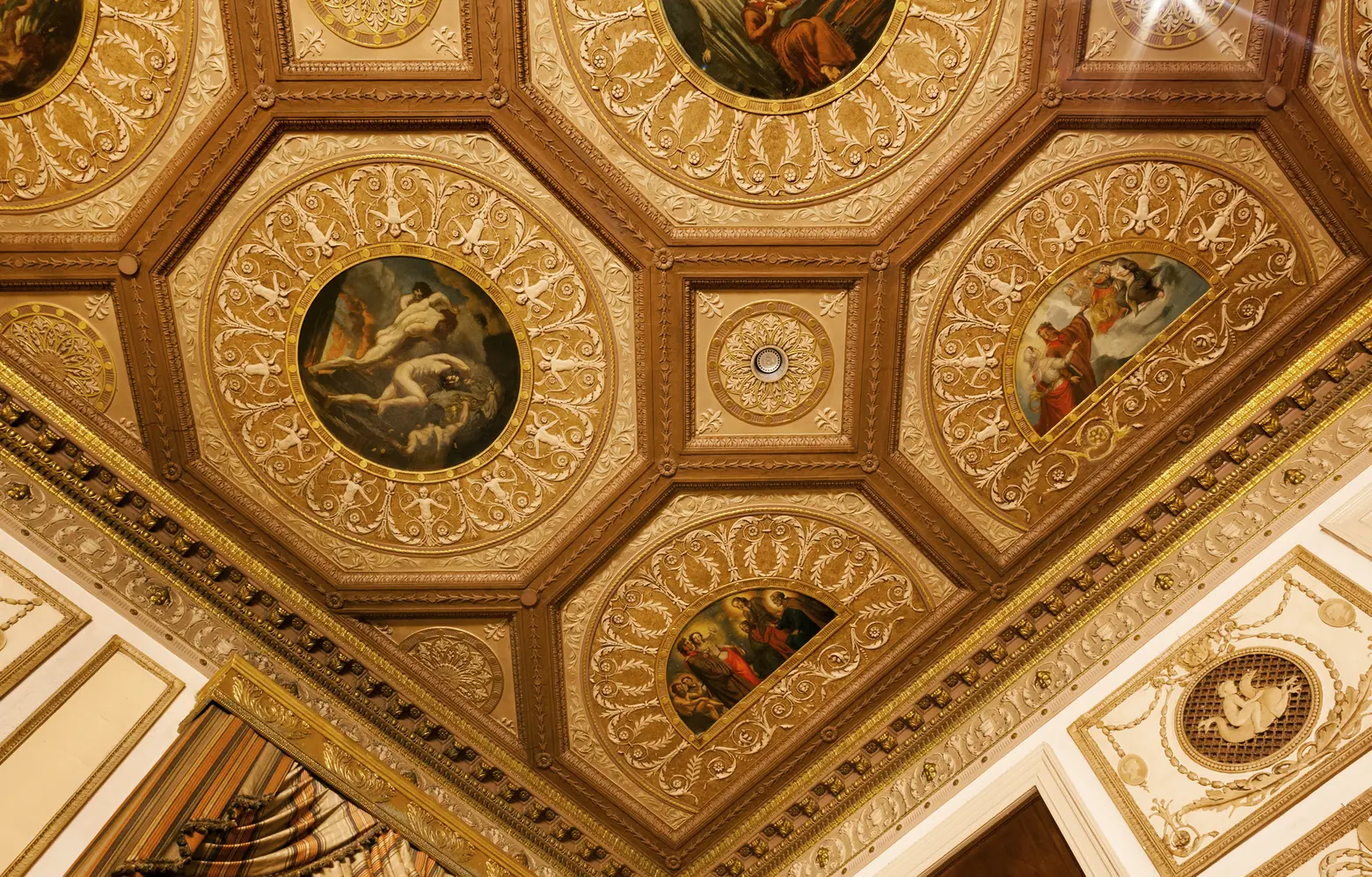
The elaborate floors and ceilings of the Basildon Room come from the dining room of an 18th-century British mansion known as Basildon Park. The fireplace, mirrors, and paintings are all original from the mansion, while the plasterwork was recreated to closely resemble it.
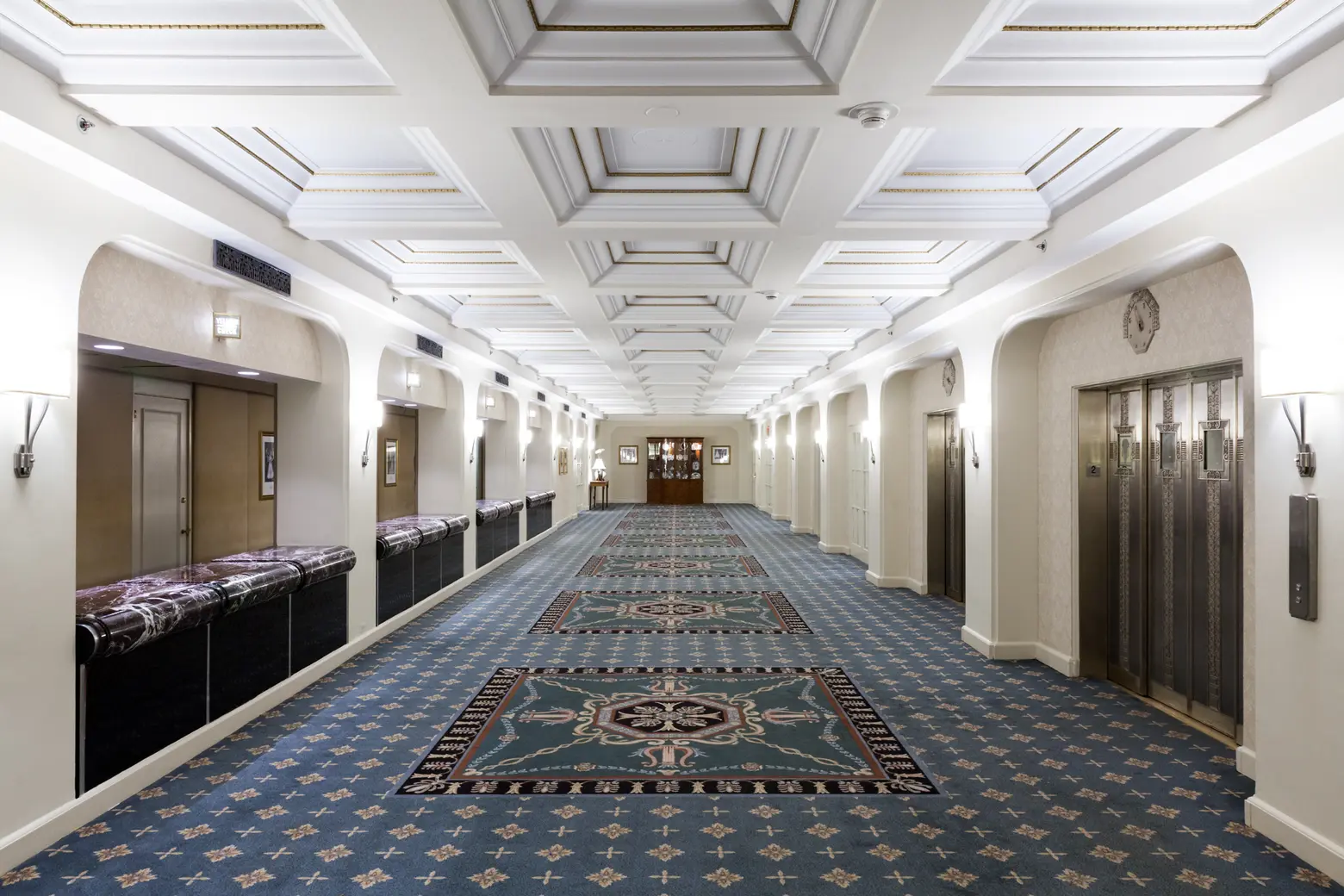
This entire stretch is a coat check for the ballrooms.
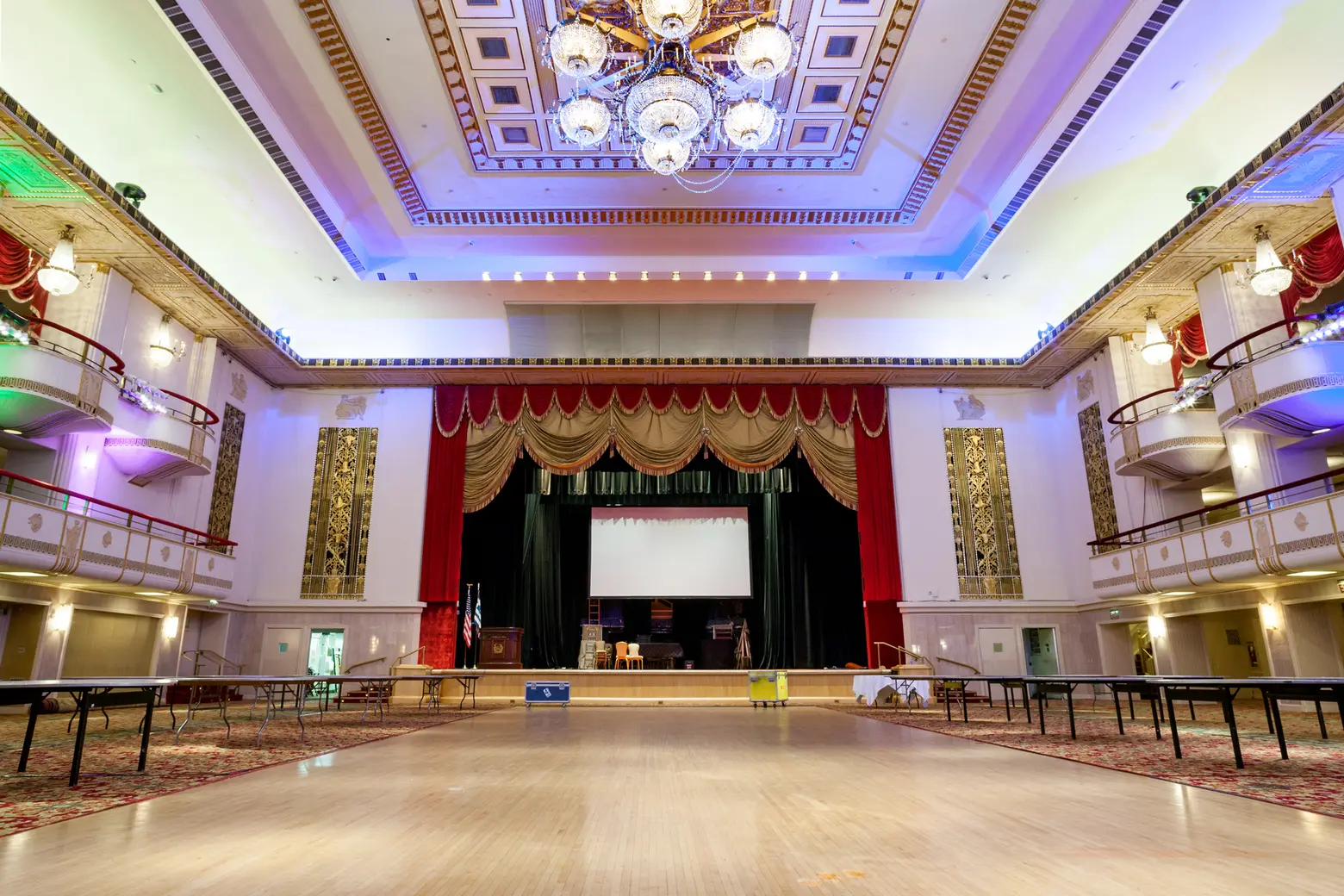
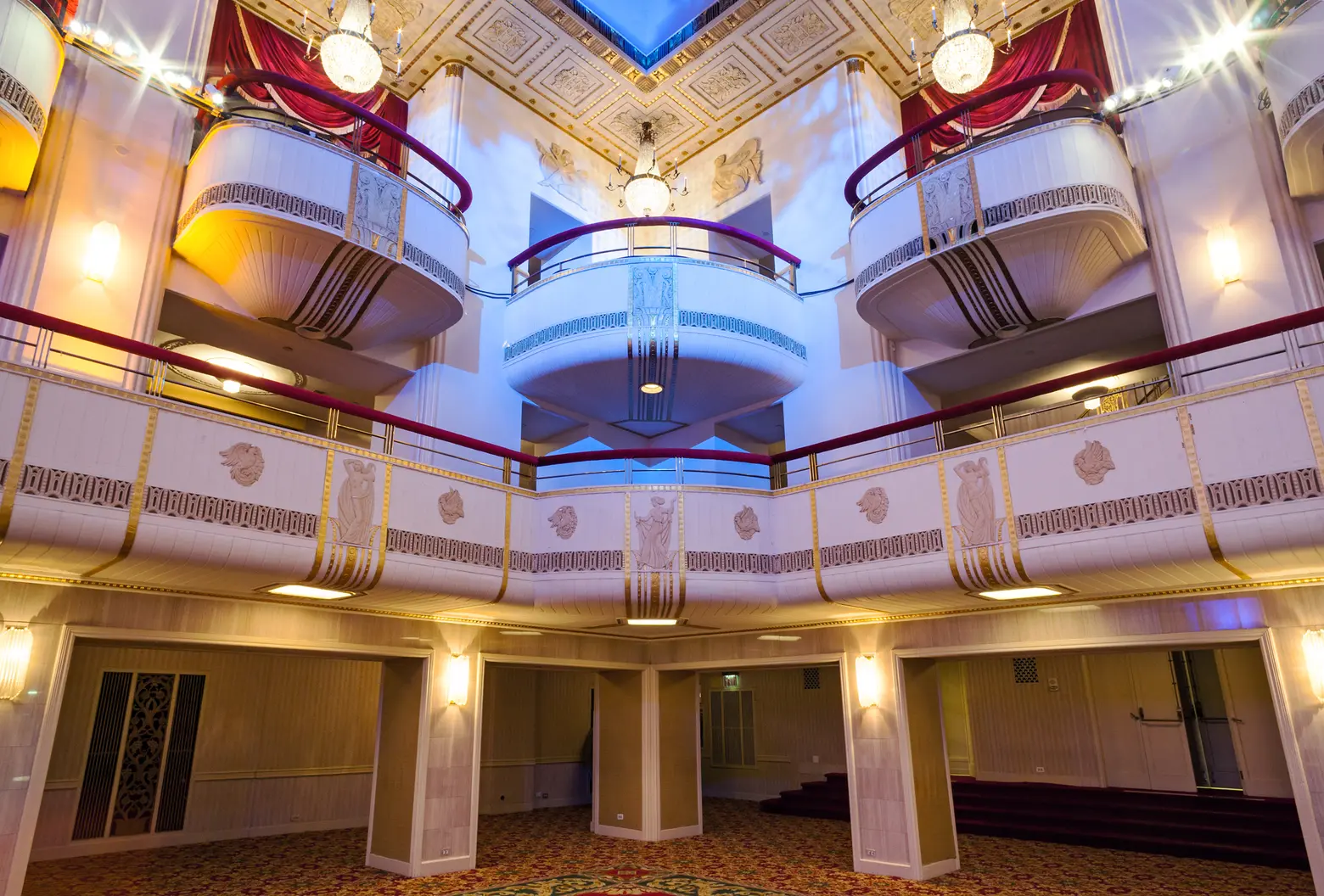
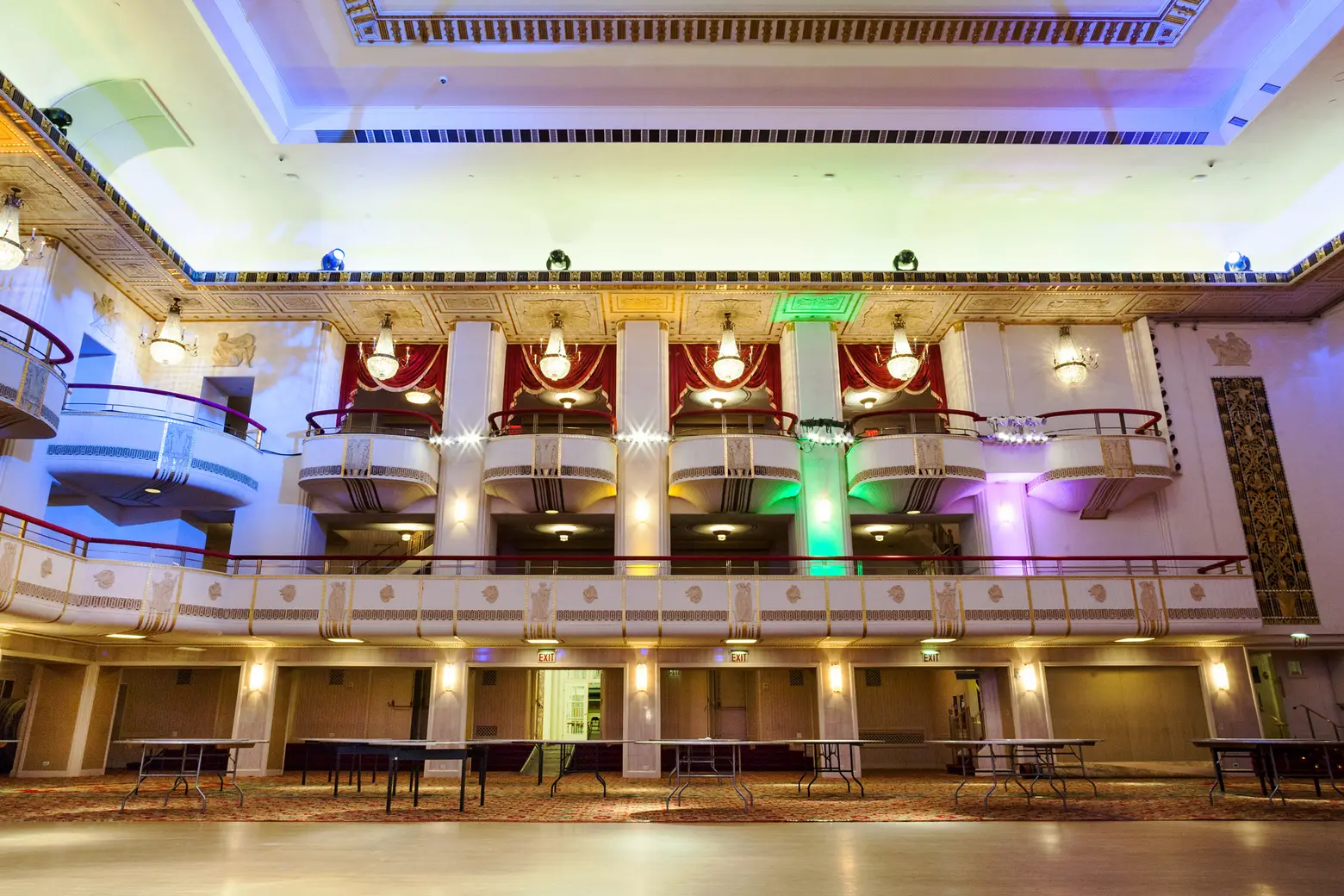
Pictured here is the grand ballroom, which can accommodate a whopping 1,550 people. It has a massive ceiling relief and projecting balconies that intersect its three-level height. Over the years, this space hosted events such as the fabled April in Paris Ball, the Catholic Charities of the Archdiocese of New York’s annual gala, and many private dinners hosted by Bob Hope.
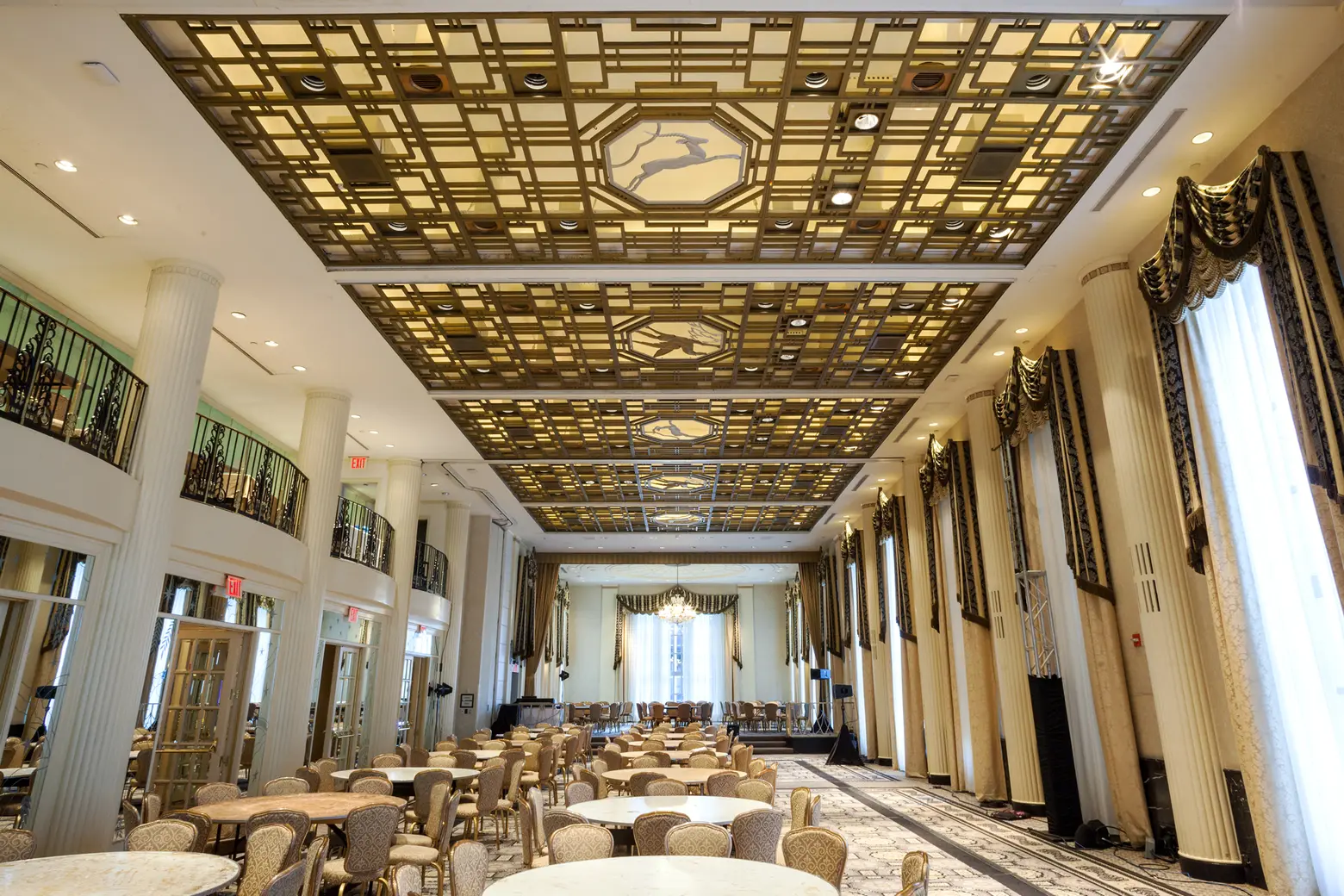
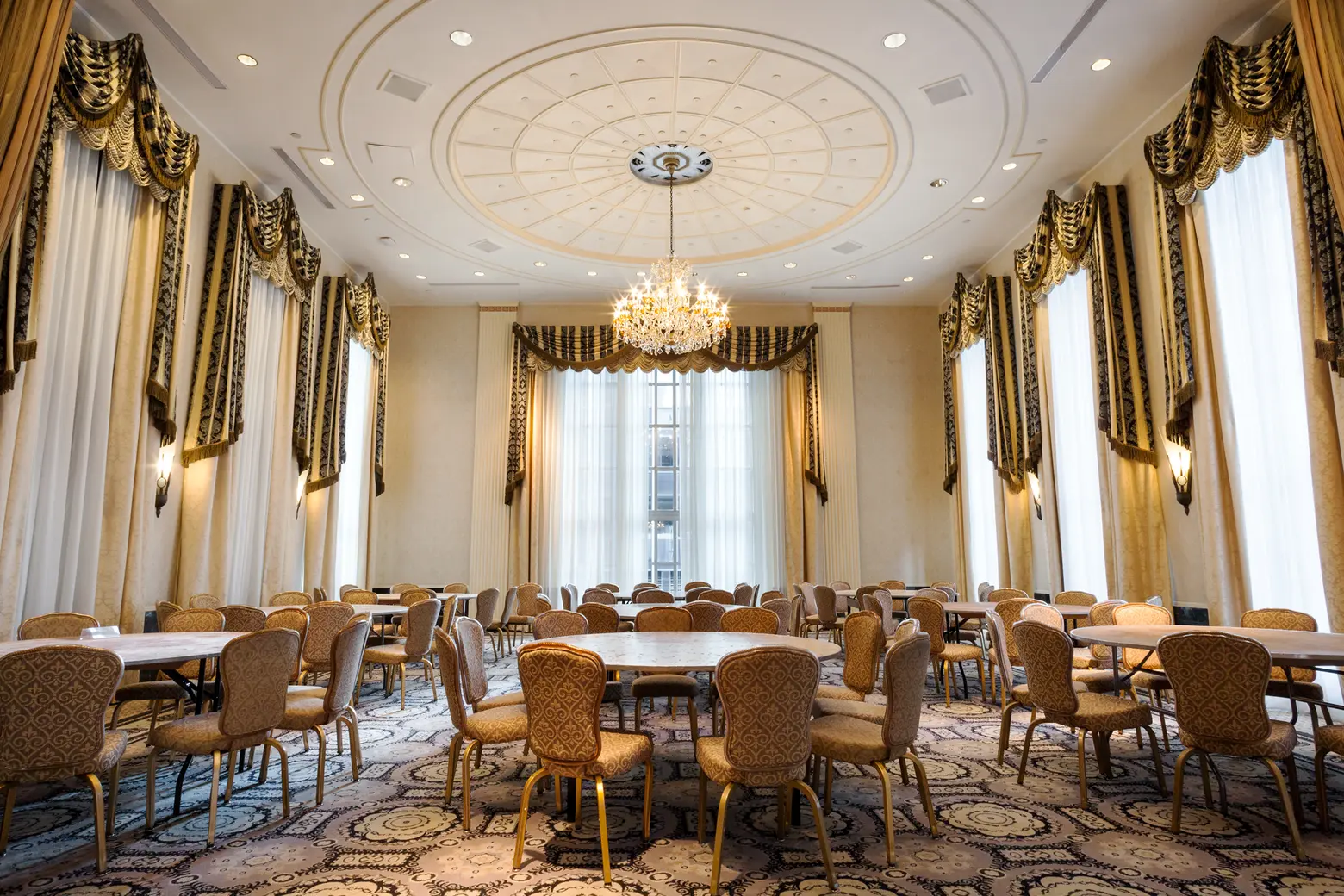
Not included in the landmarked spaces is the Starlight Lounge, another event room on the 19th floor. When it first opened, it had a retractable roof, a completely groundbreaking feature at the time, and became known as the place to see and be seen. The roof doesn’t exist anymore, and it’s not known if the developers plan to retain the space as is.
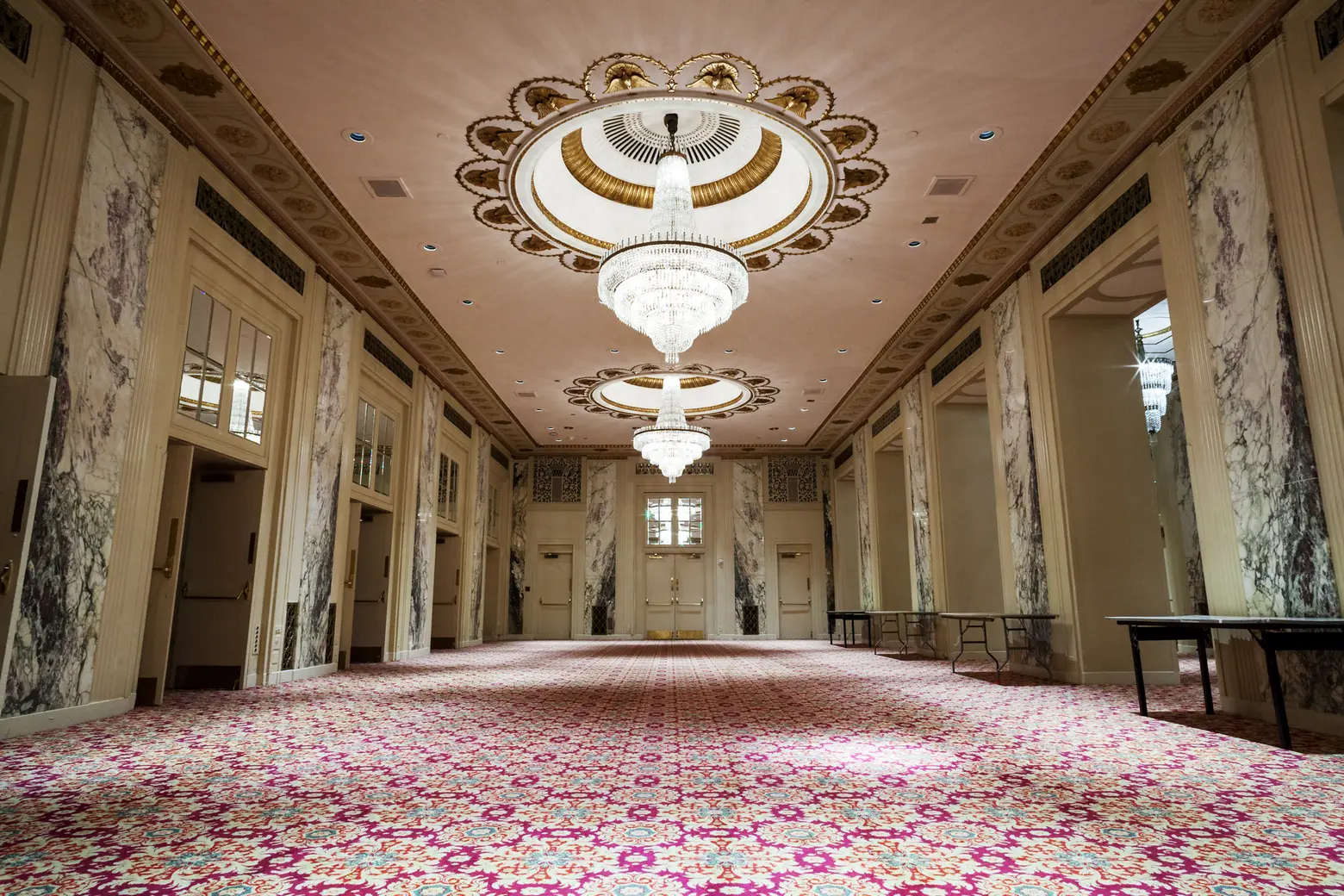
The Waldorf remains such an important landmark because it is one of only two hotels in NYC that retain the majority of their original interior architecture. The other, the Plaza, was done in a Renaissance Revival style, while the Waldorf Astoria is notable for its incredible collection of Art Deco decor.
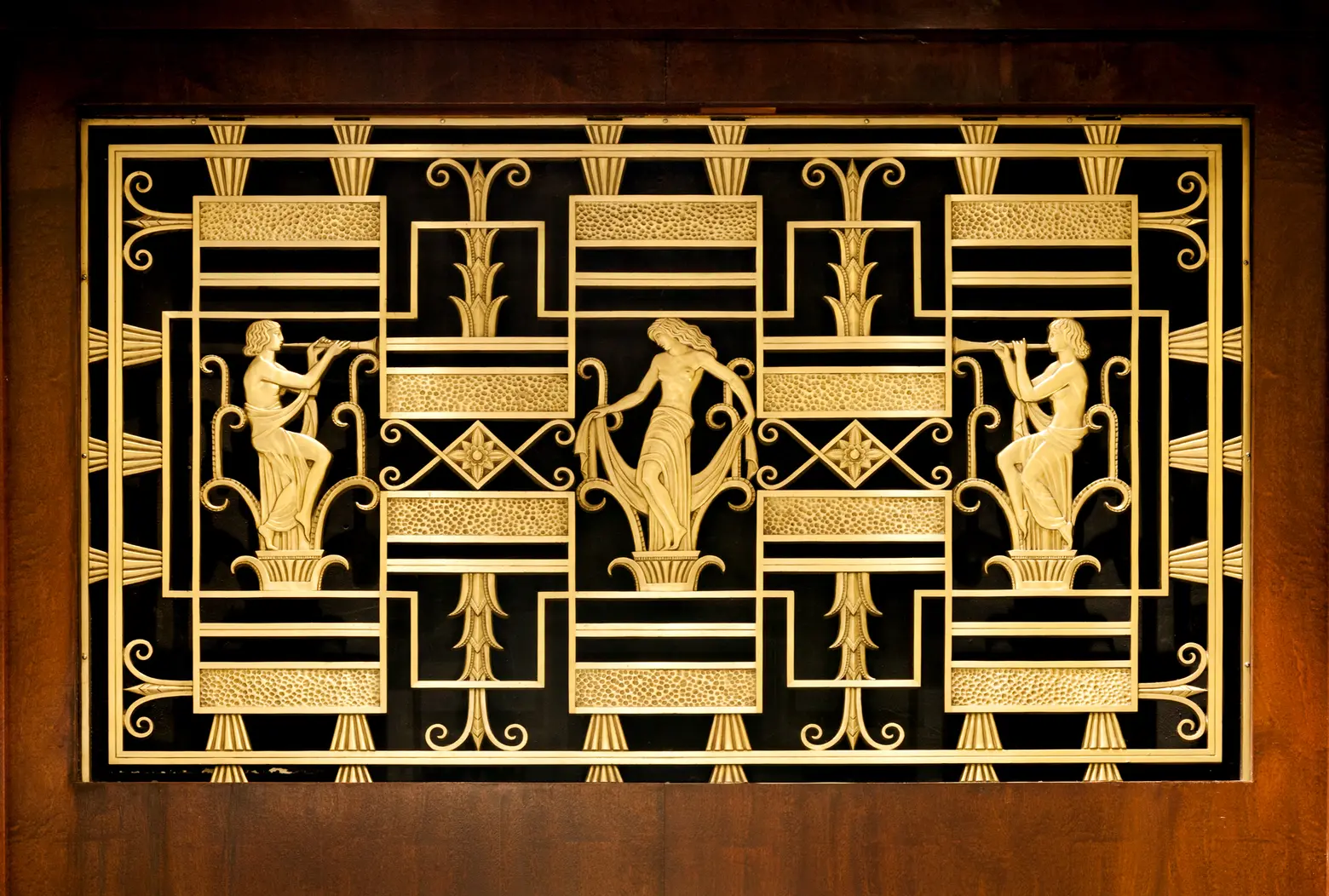
2021 may still be a couple of years off, but just today, the Waldorf Astoria announced that they’ve partnered with the New-York Historical Society to display vintage items including the Cole Porter Piano, a 1907 Steinway grand piano that Porter kept in his six-bedroom apartment in the Waldorf Towers; the aforementioned World’s Fair Clock Tower; and a rocking chair from the Presidential Suite that belonged to JFK. All these items will be returned to the Waldorf upon its completion.
RELATED:
- A new deal and more construction at Waldorf Astoria, though opening date is delayed
- You can buy a $14,000 mantle and more salvaged items from the Waldorf Astoria
- Anbang taps Skidmore, Owings & Merrill for Waldorf Astoria renovation
- All Waldorf Astoria coverage
All photos taken by James and Karla Murray exclusively for 6sqft. Photos are not to be reproduced without written permission from 6sqft.
